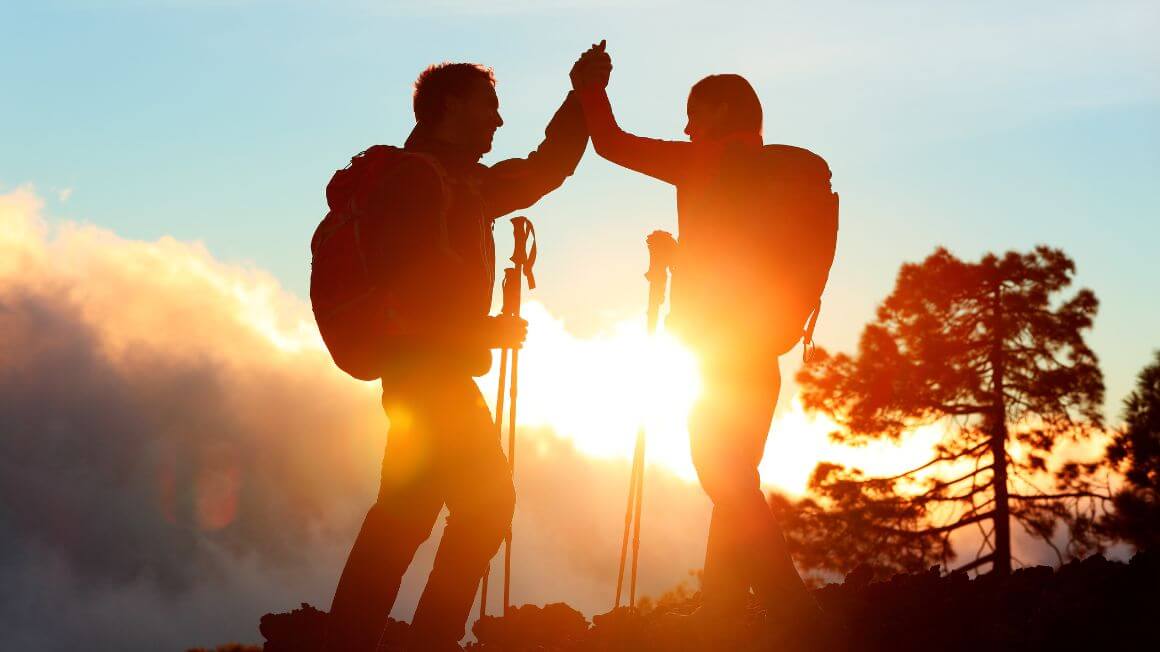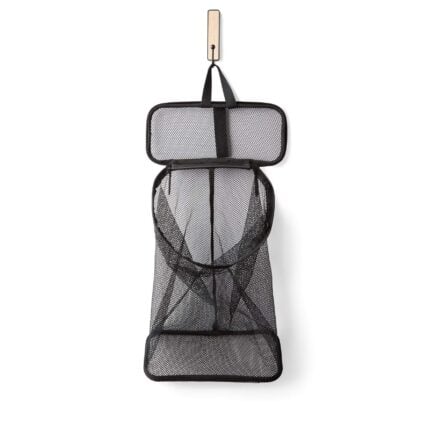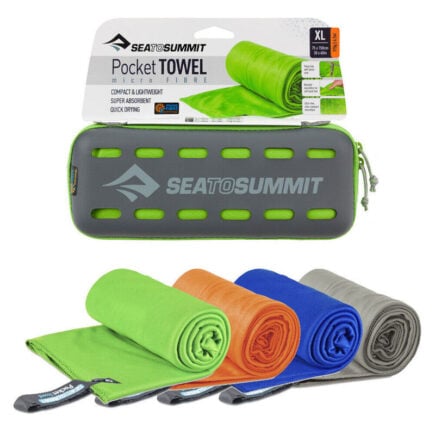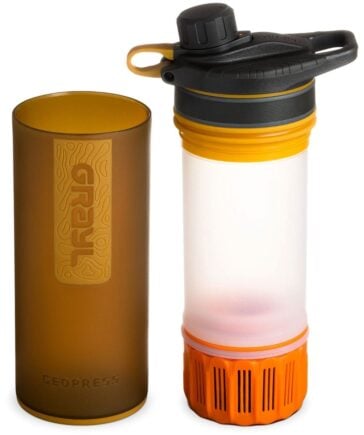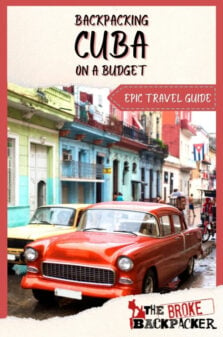For decades, Cuba has been a reserved communist island nation very much cut off from the majority of the outside world. In recent years, Cuba has began to slowly open its doors to foreign visitors—which is awesome. The result is that backpacking Cuba has become a must-visit destination for travelers looking to experience a truly unique country in its tourism infancy.
Backpacking in Cuba offers up the amazing opportunity to discover the island’s famous beaches, delicious rum, friendly locals, off the beaten path adventure, complex history, beautiful cities, and fascinating Cuban culture.
Cuba is one of the least explored Caribbean nations and there are many opportunities for budget backpackers to go on pretty epic adventures. Point being… backpacking in Cuba is a ton of fun!
In this guide, I break down everything you need to know to have a truly rewarding backpacking experience in Cuba.
This Cuba travel guide will help you get to grips with this fascinating country. Together, we will explore Cuba’s best places to visit, the top things to do in Cuba, where to stay, Cuba backpacking itineraries, travel costs, travel tips, and much more.
No matter what kind of travel adventure you are after, you can be sure that backpacking Cuba will be a truly epic life-experience. There is something for every backpacker to discover!
Vamos Pues…
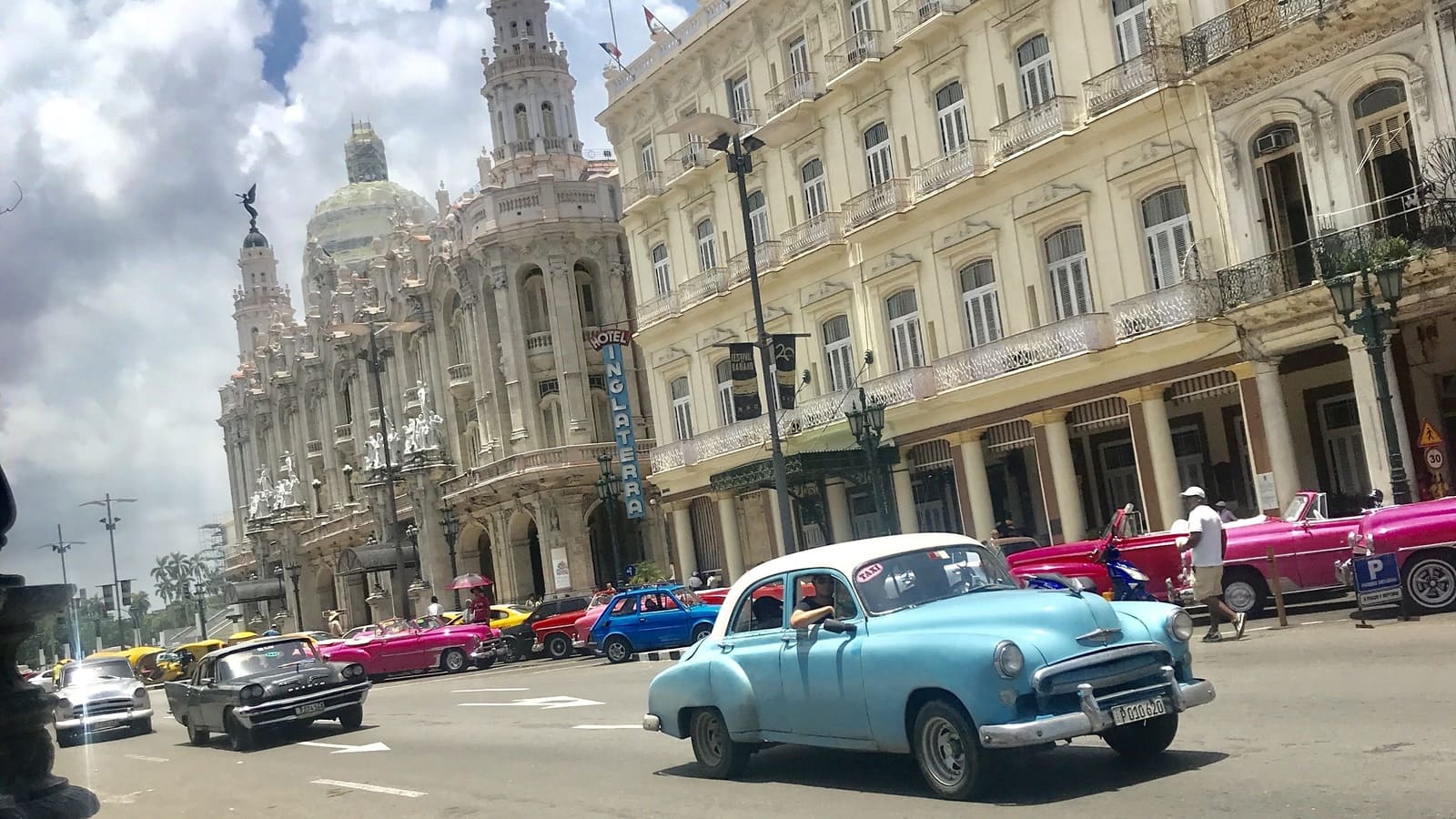
Photo: @taya.travels
The Broke Backpacker is supported by you. Clicking through our links may earn us a small affiliate commission, and that's what allows us to keep producing free content 🙂 Learn more.
Why Go Backpacking in Cuba?
As the Caribbean’s largest island, Cuba has plenty of cool places and areas to explore. Cuba is made up of several distinct geographical regions and landscapes (and many more sub-cultural regions). The amount of things to do and places to visit in Cuba is incredible – to the point where you’ll struggle to fit everything.
Cities like Havana and Santiago de Cuba make up the most populous urban centers. Of course, Cuba is an island so there are world-class beaches and coastal stretches too. Then you have the Sierra Maestra and the other the mountainous/jungle regions of the largely rural interior.
The main highways of the country determine what is accessible and what is not. Large sections of the north coast of Cuba are not developed and there the main continuous highway does not run along that portion of the country.
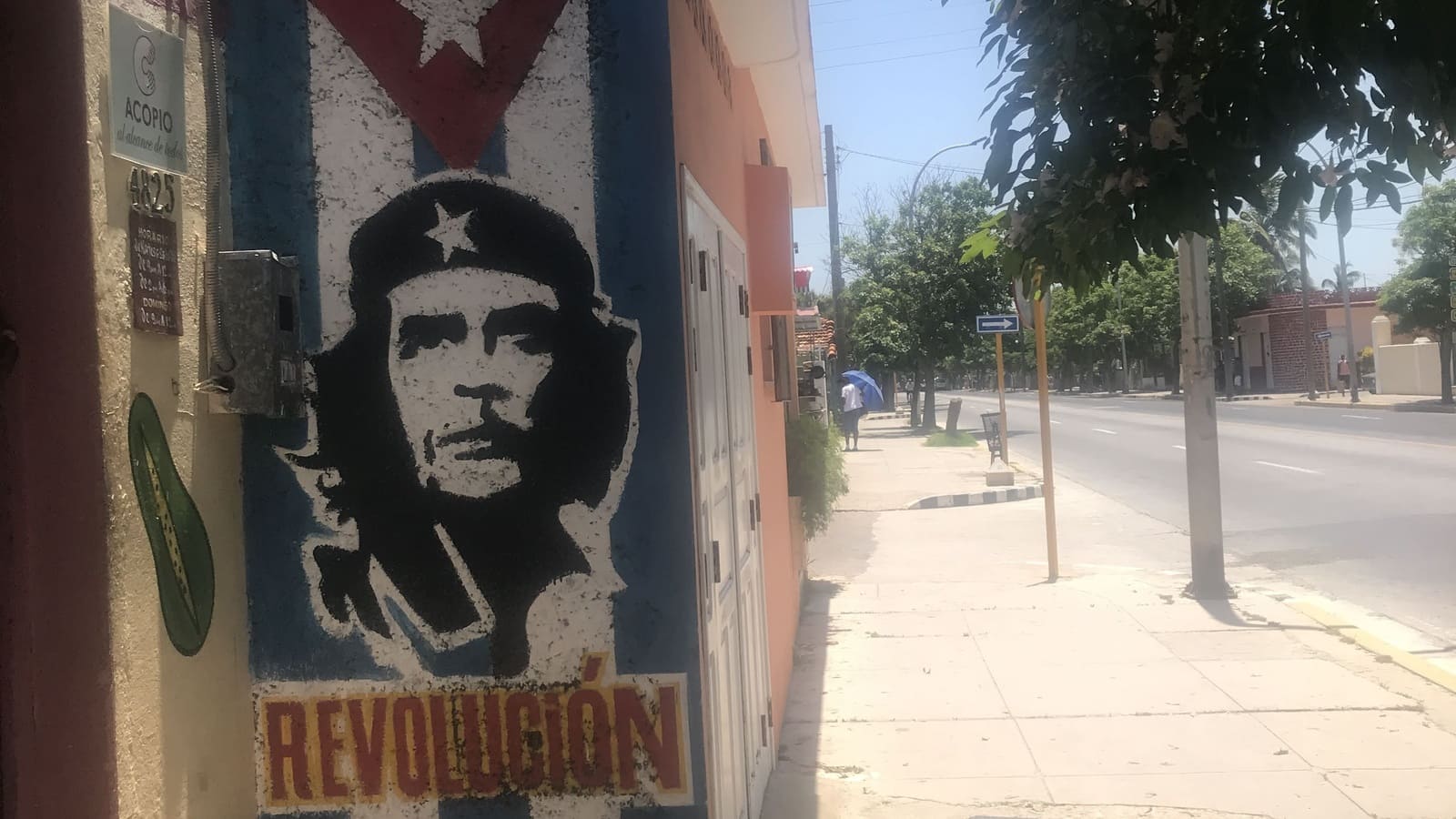
Photo: @taya.travels
Cuban cities offer up the biggest dose of Cuban culture. Colonial architecture, cobblestone streets, salsa clubs, retro cars, and the appearance of an emerging “modern Cuba” define the country’s urban centers.
Cuba’s beaches have been popular with foreigners for at least a century. Some classic white-sand beaches like Cayo Levisa are touristy, whilst many other beaches are virtually off the radar.
There are at least 10 major biospheres, nature reserves, and national parks in Cuba. Each one has something unique and interesting for backpackers. All of Cuba’s great diversity is showcased in its national park system. In fact, the diversity of Cuban landscapes make up a large part of what makes Cuba such an awesome place to visit.
Now, let us take a look at some of your itinerary options for your backpacking Cuba adventure…
- Best Travel Itineraries for Backpacking Cuba
- Places to Visit in Cuba
- Top Things to Do in Cuba
- Backpacker Accommodation in Cuba
- Cuba Travel Costs
- Cuba Travel Tips
- Best Time to Travel to Cuba
- Staying Safe in Cuba
- How to Get Into Cuba
- How to Get Around in Cuba
- Working in Cuba
- Food in Cuba
- Cuban Culture
- Some Unique Experiences in Cuba
- Final Advice Before Visiting Cuba
- Buy Us a Coffee!
Best Travel Itineraries for Backpacking Cuba
Looking for a Cuba backpacking itinerary? Whether you have 2 weeks in Cuba or a month to really explore, I have assembled several Cuba backpacking itineraries to help you make the most of your time in this epic country.
These Cuba backpacking routes can easily be combined or customized!
Cuba in 7 Days: Havana, Cigars, and Beaches
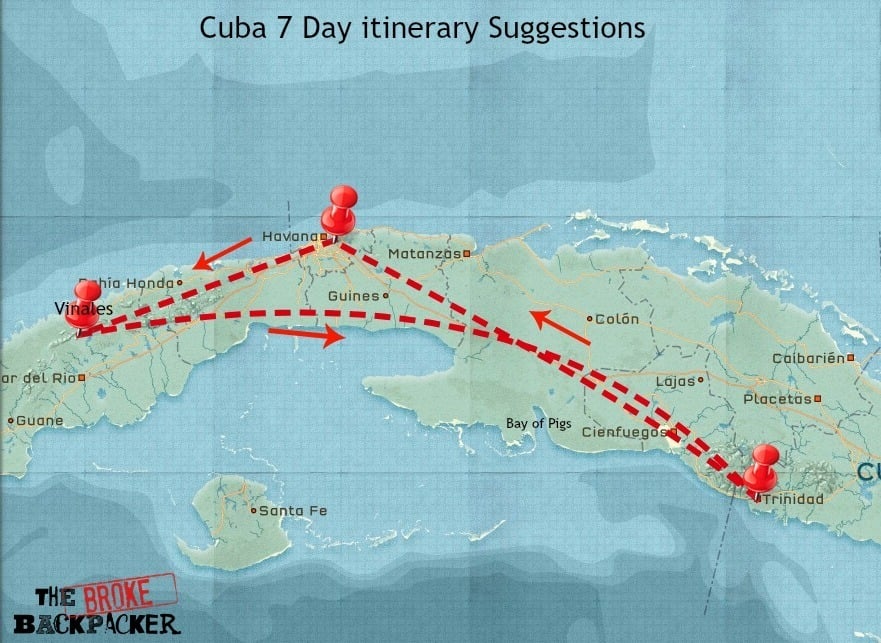
Havana -> Vinales -> Trinidad
Only have one week to travel around Cuba? No problem. There is PLENTY of to do in just 7 days.
For this Cuba itinerary, as well as the others, I will assume that you will be starting your journey in Havana, Cuba’s capital.
Cuba is a surprisingly big place. Because of that, I recommend that you don’t try to plan too many things at once. A realistic 7 day itinerary for Cuba does keep you moving, though with some restraint so that you can actually enjoy and experience the places you are visiting!
To get to grips with Cuba, you are going to need a few days getting to know the great time machine that is Havana. I recommend spending at least three days in Havana.
Over the course of your three days in Havana, you will start to picture what modern life is like in a country slowly stepping into the modern world (through a communist filter). Here is what you should do with your time in Havana:
- Visit Old Havana
- Listen to live music, i.e Salsa
- Visit Plaza de la Revolución
- Explore the Callejón de Hamel neighborhood
- Take a tour of a cigar factory
- Visit a museum or two: Museo Nacional de Bellas Artes and Museo de la Revolución (are my top picks)
You’ll find that Havana is a really awesome place to wander around and soak up the vibes. There is always something interesting happening in Havana and if you are looking to party…well, weekends at the legendary clubs of Havana are where it’s at.
After Havana, head a few hours down the road to Vinales. Vinales is one of my favorite places in Cuba. Spend a day or two exploring the beautiful green limestone mountains. Check out a tobacco farm. You can hire horses to visit a far-flung farm in the valley.
Next stop is Trinidad. Spend your final days in Cuba learning about the history of Trinidad, and, of course, enjoying the beautiful beach at nearby Playa Ancón.
Cuba in 14 Days: Beaches, Mountains, Cities
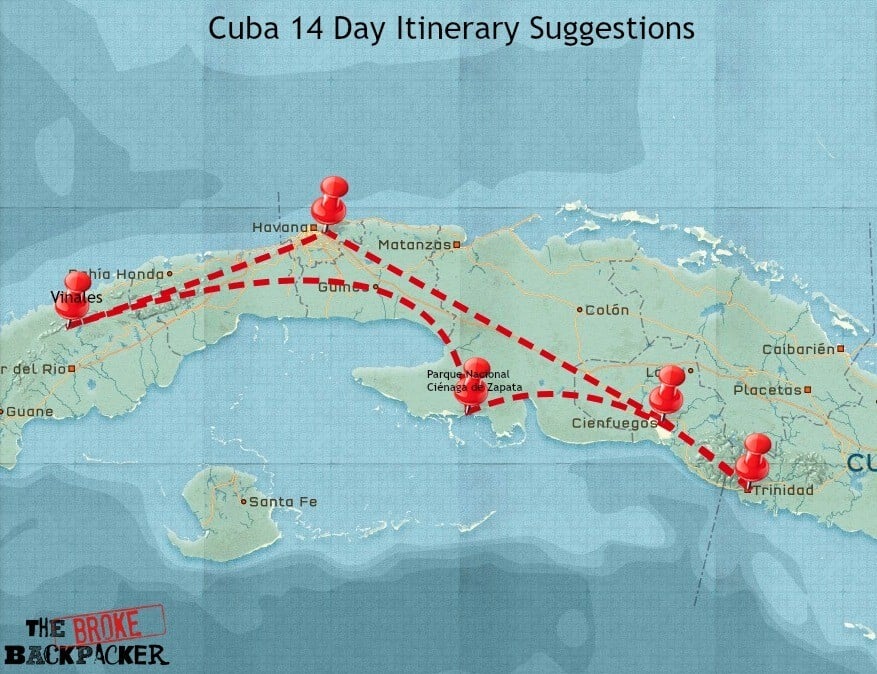
Havana -> Cienfuegos -> Trinidad -> Parque Nacional Ciénaga de Zapata -> Vinales
This 14-day itinerary allows for a bit more in-depth exploration of a few places mentioned in the 7 day itinerary above. The same thing applies though: don’t try to do too much when backpacking Cuba.
Choose between 5-7 places and really experience those places. Backpacking Cuba is all about taking things slow, so embrace it!
For this 14 day Cuba itinerary, you will be taking another route out of Havana, saving Vinales for the end.
After exploring Havana for a couple of days, head to Cienfuegos. Cienfuegos is the “real Cuba” experience and you won’t find many other backpackers here normally (though this is changing). Check out the impressive Teatro Tomás Terry and the nearly two-century-old Cementerio la Reina.
On your second day in Cienfuegos, you can cross the bay on the ferry to Castillo de Jagua, an 18th-century fortress.
After Cienfuegos, take between 3-5 days to really settle into Trinidad. Waterfall hikes, gorgeous beaches, tobacco farm tours, and horseback riding adventures are all on offer here. Certainly, dedicate a full day to exploring Parque Natural Topes de Collantes, which is best experienced if you hire a guide and some horses.
Now it’s time to head back west en route to Vinales. From Trinidad to Vinales you are looking at at least a 7-hour bus ride, so it is best to break up the journey with a stop at Parque Nacional Ciénaga de Zapata or Playa Large near the Bay of Pigs.
You can spend your final few days in Cuba falling in love with beautiful Vinales.
Cuba in 1 Month: See the Whole Country!
Havana -> Vinales -> Parque Nacional Ciénaga de Zapata -> Bay of Pigs -> Cienfuegos -> Rancho Luna -> Trinidad -> Santa Clara -> Parque Nacional de Turquino -> Santiago de Cuba -> ?
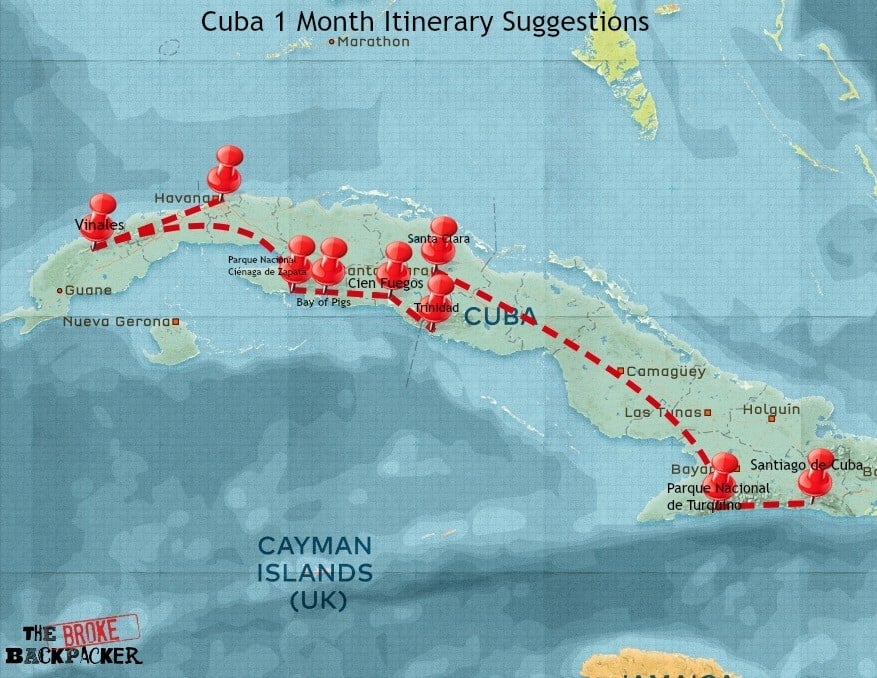
If you have a month or more to explore Cuba you can really see a good chunk of the country. This Cuba itinerary will take you off the beaten path and allow you to get to know a part of Cuba that few travelers ever get to see.
With so much time on your hands, there is no need to rush. Really like Havana? Spend a week there. Fall in love with Vinales? Stay a little longer. Another benefit of having a month to backpack Cuba is that you can make it to the less visited eastern part of Cuba.
You can base yourself in Cuba’s 2nd biggest city, Santiago de Cuba, and explore the nearby Parque Nacional de Turquino. There are countless adventures to be had in eastern Cuba and the fact is many people who visit Cuba don’t make it beyond Santa Clara!
Point being, there is no real time pressure on you so you can take the opportunity to be spontaneous, explore the national parks, go scuba diving, learn Spanish, etc.
If you manage to extend your visa for another 30 days, I recommend volunteering on a farm or in a school during your Cuba backpacking adventure.
Remember, you can always fly or take the train from Havana to Santiago de Cuba and start your 1 month itinerary from there. You should note that internal flights within Cuba are expensive. Since you are in no hurry, a combination of bus, train, and hitchhiking is the way to go.
Want to save money on accommodation?
Enjoy 15% OFF on stays ALL around the world.
Places to Visit in Cuba
Backpacking Havana
Havana is without a doubt the beating heart and vibrant soul of Cuba. One’s first impression of Havana is indeed that of a time warp. 1950s era classic cars blend with rows of pastel-colored houses. Cuban music wafts out of open windows. Street vendors sell tasty treats from carts sometimes drawn by horses.
As much as Havana conjures up nostalgia, it is certainly a city on the move. With its different neighborhoods, you’ll have a lot of choices for where to stay in Havana.
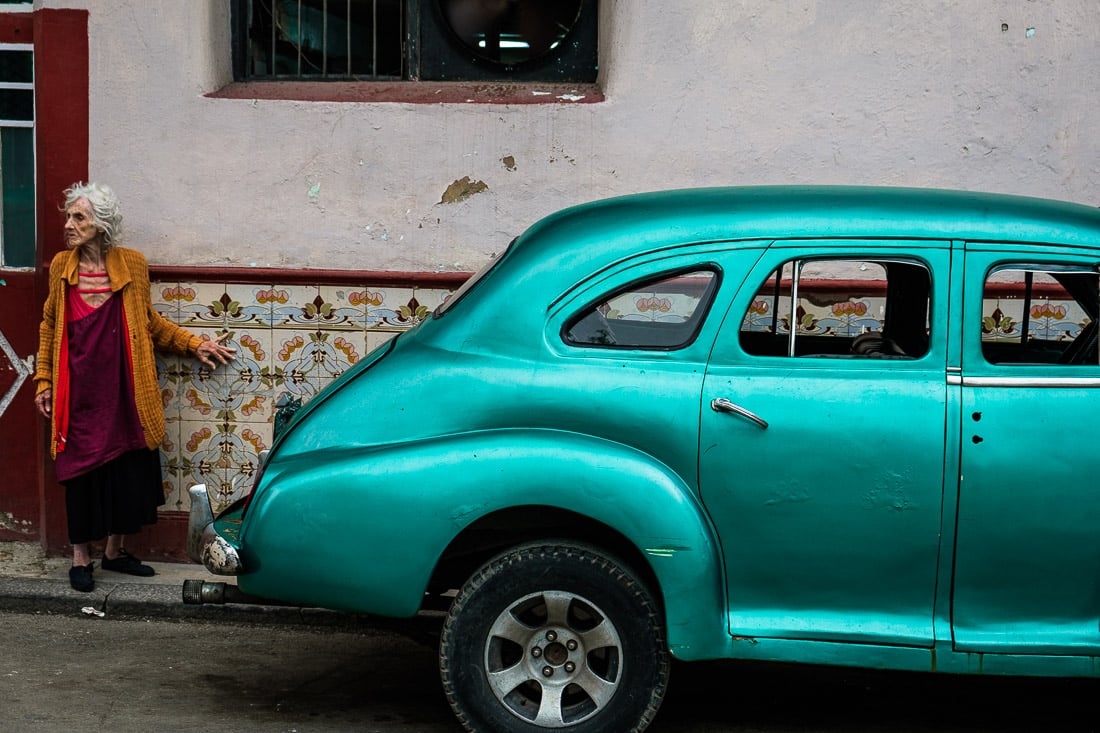
Photo: Chris Lininger
To start, head directly to Old Town Havana to walk the cobblestone streets and soak in the colonial architecture from the Spanish era. Whilst Old Town is charming as hell, Havana Centro is where the real action is. This is where you’ll find most of Havana’s hostels and backpacker accommodations.
We opted to stay in Old Town for the first four days of the trip. Old Town Havana is shockingly touristy in places, so do your best not to get ripped off for simple things like taxi rides and food.
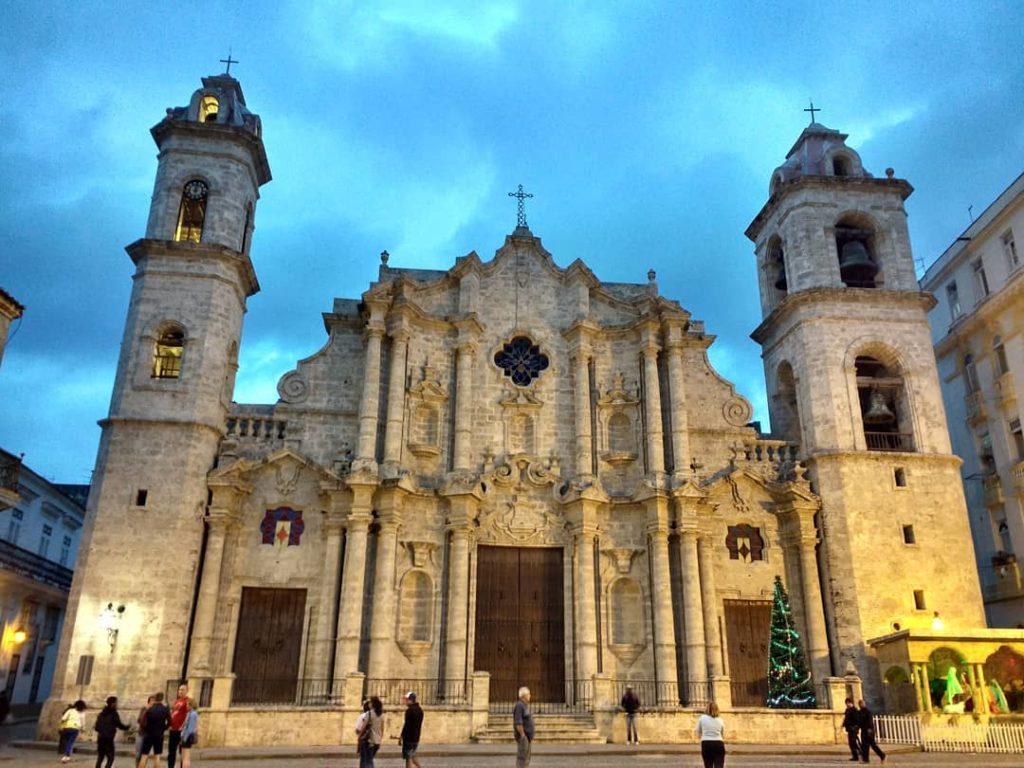
Photo: Andrea Cacciatori
For lunch, eating at a paladar is a quintessential Havana experience. A paladar is a sort of in-house restaurant run by a small family. They often offer cheap, delicious eats.
Take the walk from La Rampa in the Vedado neighborhood to the Malecón and beyond, The Malecón is a seawall skirting along the coast for a few kilometers, and sunset walks here are best. If you take a taxi 15 minutes outside of Havana along the Malecón you can find more secluded sunset spots.
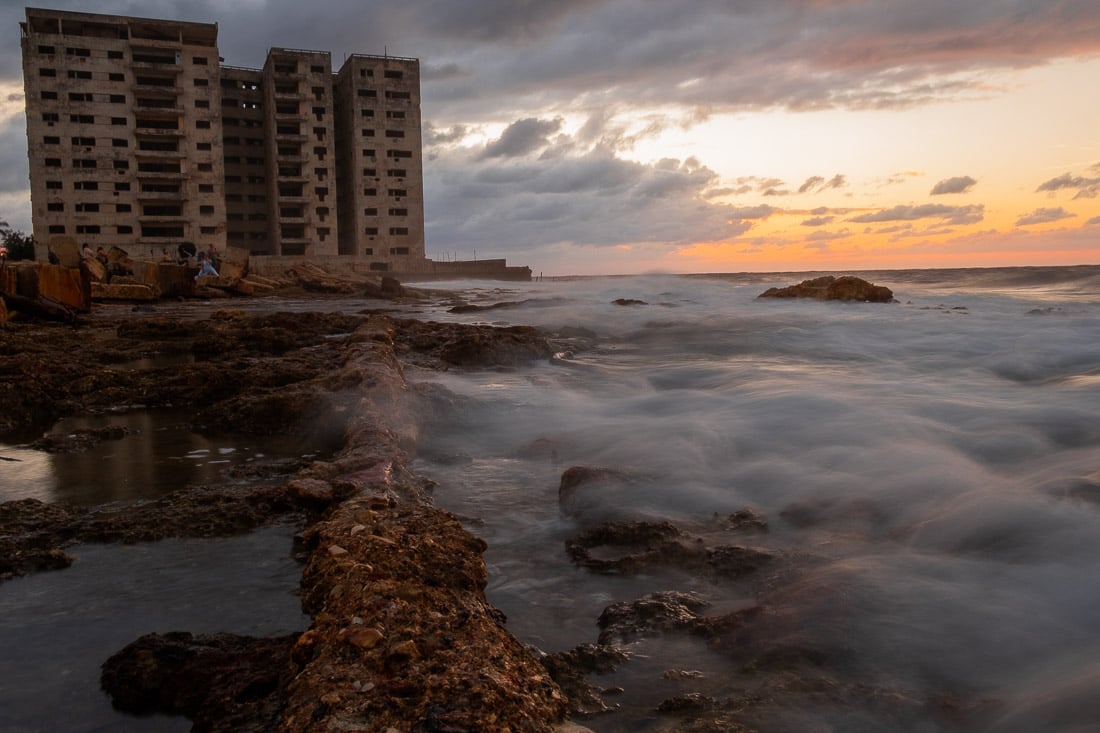
Photo: Chris Lininger
For a slightly cliche yet thoroughly entertaining activity, rent an old car to transport yourself back in time in style. You can always visit the rum museum if you want to learn about Cuba’s national drink.
See my Cuba 7 -day itinerary above for even more awesome things to do in Havana.
Backpacking Vinales
The small town of Vinales and the surrounding Vinales Valley are blessed with some of the most stunning natural scenery in the whole county. Rolling green tobacco farms and impressive rocky outcroppings make a big first impression.
Rent a bike in town and head to the Mural de la Prehistoria (4 km from Vinales). The mural itself took 18 artists a staggering 4 years to complete! Very impressive indeed. In the hills above the mural, you can undertake a hike to the tiny community of Los Aquaticos. Be aware of scammers offering fake tours. You really don’t need a guide to walk.
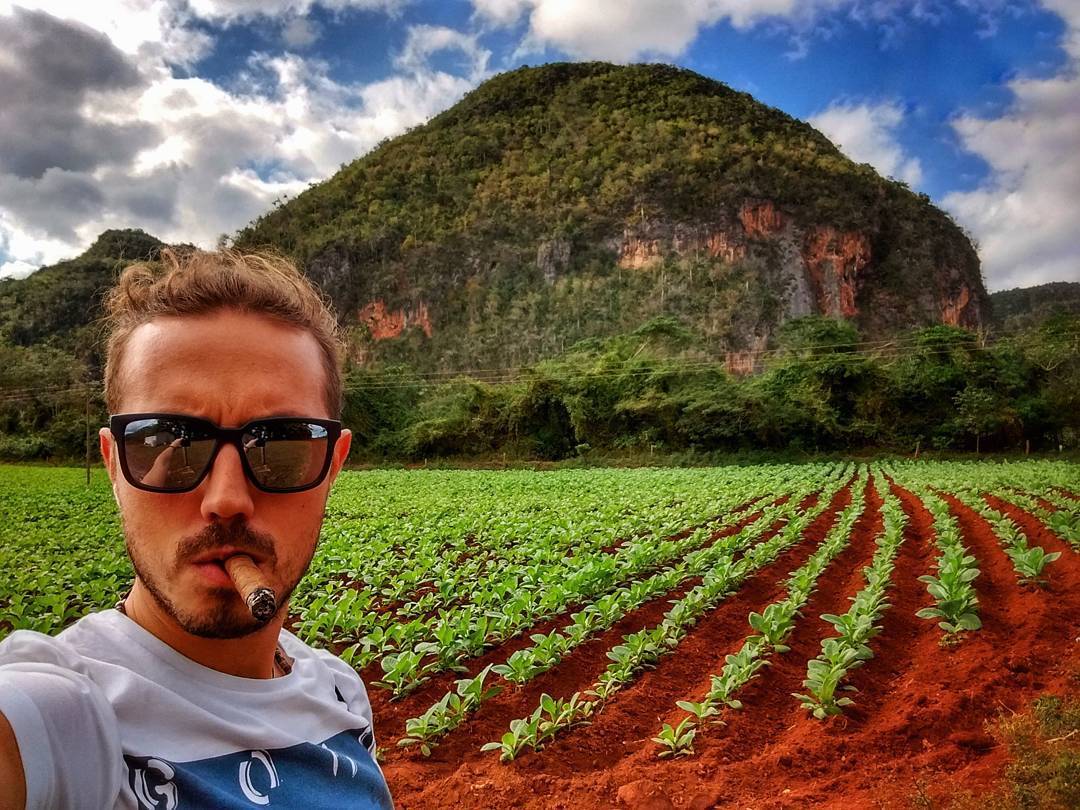
Photo: Andrea Cacciatori
For one of the best sunsets of your life, you can head to the Valle Del Silencio. You can find some reasonably priced real tours in town, but a sure way not to get scammed is to go through the Villa Los Reyes hotel.
They take you to visit a tobacco plantation en route to an epic sunset spot where you can soak in the day’s final lights with a cold mojito in hand. Not bad, right?
Other fun activities in Vinales included cigar-rolling, horseback riding (as is an option in most of Cuba), and rock climbing if you’re keen. I’ll add that the rock climbing around Vinales is some of the best climbing to be had anywhere in Cuba. Cueva de la Vaca is one of the best climbing spots!
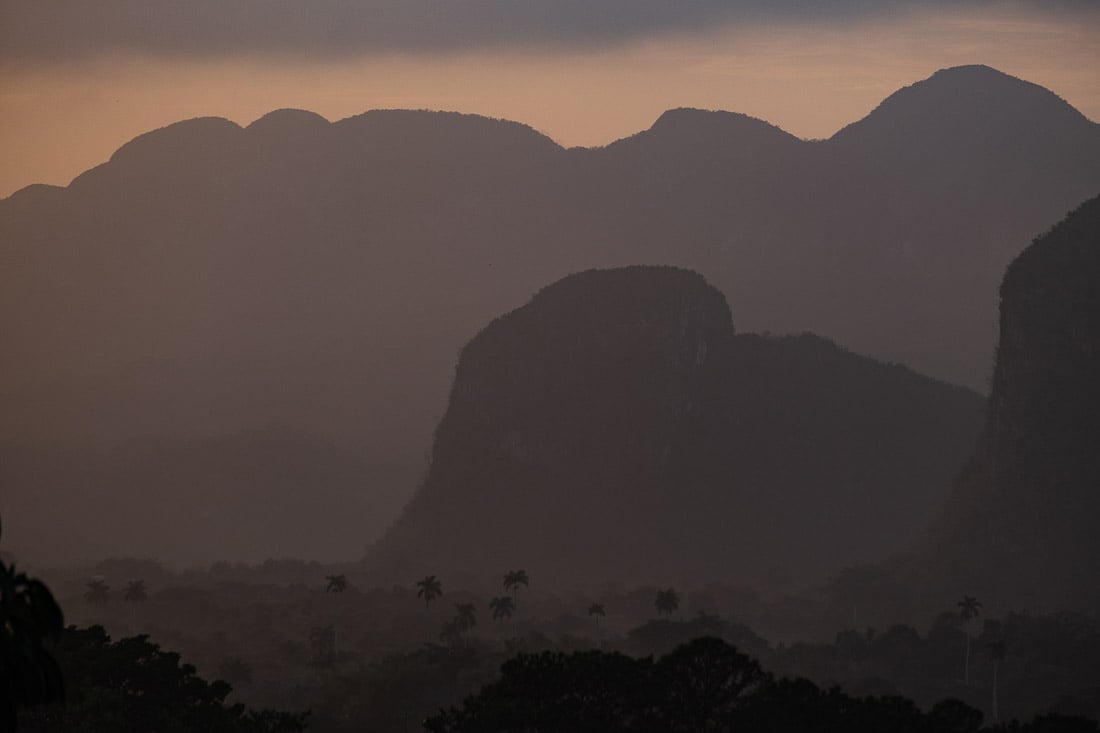
Photo: Chris Lininger
Backpacking Cayo Jutías
For some reason, few backpackers head further west to the coast after visiting Vinales. If you travel on deeper into the Pinar del Río province, you’ll find perfect white sand beaches, ample diving and snorkeling opportunities, and far more local Cubans than tourists.
To reach Cayo Jutías you can hire a shared taxi. Be sure to negotiate heavily for a fair return price. Also, confirm the exact time you want to head back as many drivers will not make the journey after dark.
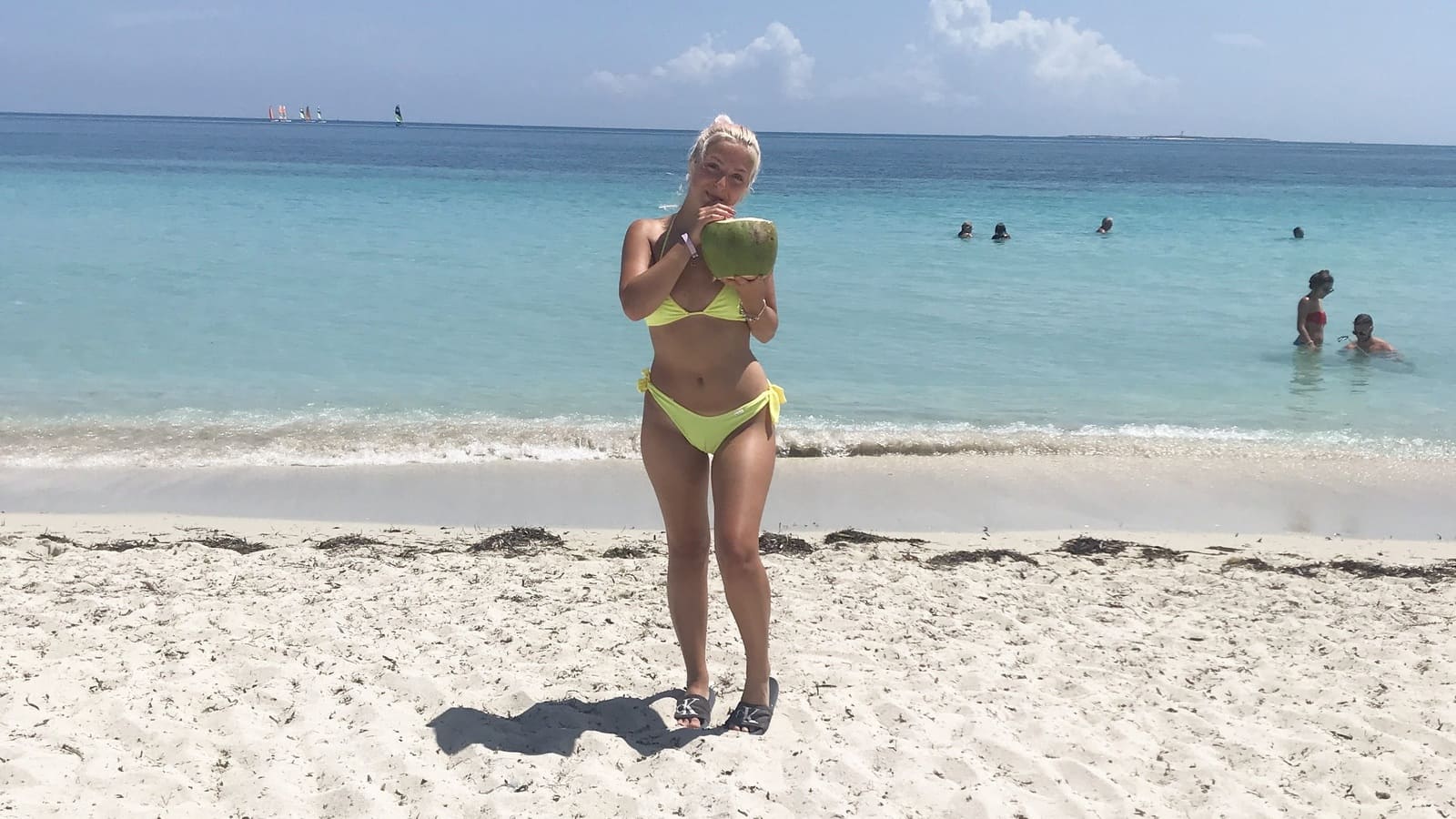
Photo: @taya.travels
As of now, there are no places to sleep on Cayo Jutías (it’s rather small) though if you have a good tent, you can sleep there for free!
Cayo Jutías is a true, gorgeous Cuban beach paradise. That said, the mosquitoes are ruthless and will eat you alive if you don’t cover up (especially around sunset.) The alternative to camping in Cayo Jutías is to sleep back in Vinales.
Backpacking Cienfuegos
The French colonial town of Cienfuegos is a charming Cuban town on the south-central coast. It is a very lowkey place with a much more relaxed, local vibe. Depending on who you are and where you’re coming from – e.g. Havana or Trinidad – it will feel like either a welcome or abrupt change of pace.
Most people travel to Cienfuegos just to catch a boat to Cayo Largo. It could be worth spending a day or two in the city though.
The city center is the natural place to begin your exploration of Cienfuegos. Blessed with beautiful French colonial architecture and attractive streets, the city center of Cienfuegos has been a UNESCO world heritage site since 2005. One of the best (and most attractive) parts of the city is in and around Jose Marti Square.
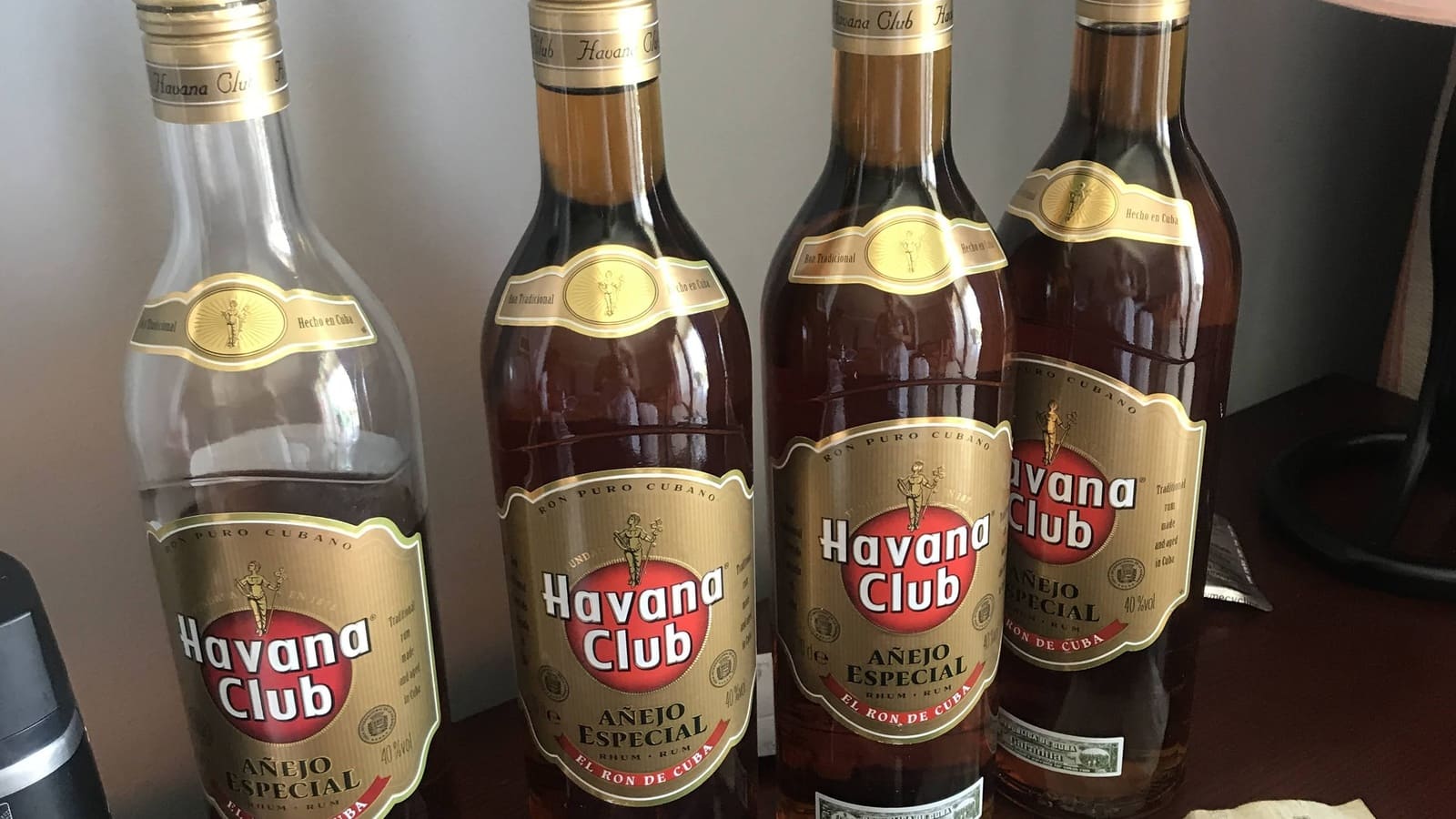
Photo: @taya.travels
From there, you can take a stroll down one of Cuba’s longest boulevards, simply named the Cienfuegos Boulevard. It is interesting as you start getting to know Cienfuegos, it really doesn’t look or feel like any other city in Cuba.
Apart from strolling along the seawall near Punta Gorda and taking in the architecture in the city center, Cienfuegos is a great place to go out partying/dancing (despite being far more mellow than Trinidad or Havana). Bring your A-game. Cubans really know how to cut a rug.
The beaches around the city have the reputation of being polluted and dirty, but certainly, the severity of this depends on the season. Playa Rancho Luna is the most popular beach nearby, and I’d rate it as “just alright. You can take either a very crowded local bus or a private taxi to get there.
Backpacking Trinidad
Trinidad is another Cuban city that makes you feel like you woke up in a different decade: classic cars and stunning colonial architecture abound. Trinidad’s history has a lot to do with how nice it currently looks.
In the boom years of sugar cane, tobacco, and cattle production (often worked by African slaves in the past), the town became very wealthy indeed. The extravagant plazas and brightly painted houses are a reflection of that economic period.

Photo: Andrea Cacciatori
A refreshing must-try local beverage (that isn’t rum) is sugar cane juice. Don’t forget to mix in a little rum though in the evenings ;). Trinidad is an excellent place to keep it simple. One could easily spend 3-5 days in Trinidad, walking the cobblestone streets, catching live music shows, partying when the sun goes down, or just relaxing in a cafe after hitting up a museum or two.
Highlights of the city include the Plaza Mayor (avoid the touts by going in the early evening), a climb up the Bell Tower for epic views, and eating delicious Cuban food (anytime). The Cave Disco Club is a pretty happening spot to catch some nightlife.
When the urge arrives to hit the beach, head down the road to Playa Ancon. The taxi ride shouldn’t be more than a few bucks. Be aware that at certain times of the year, the mosquitoes can be fucking terrible at Playa Ancon. I itch just thinking about it.
Backpacking Playa Larga/Bay of Pigs
Well, thankfully the days of the CIA-backed invasion of the Bay of Pigs are long over. Shady history aside, Playa Larga is a must-visit beach if you are in the area.
I will say that Playa Larga can feel quite touristy, but in Cuba, touristy doesn’t necessarily mean tacky, overrated, and exploding with foreigners.
Playa Larga is one of the best places in Cuba to go diving. If you’re like me and need to get a scuba fix on any given backpacking trip, you’re going to really dig Playa Larga. Some of the best diving can be found around Punta Perdiz, though there are quite a few badass dive sites in the Playa Larga area.
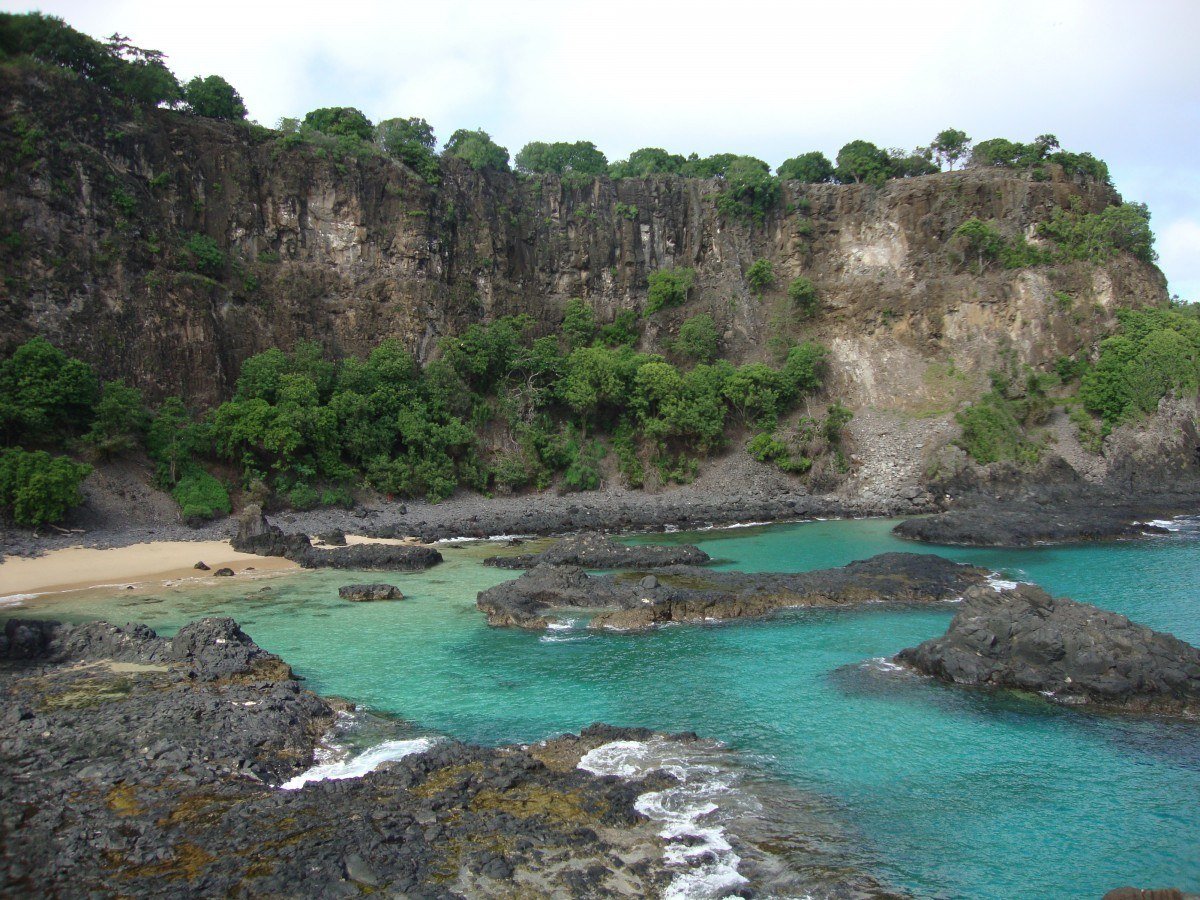
In between dives be sure to check out the Cueva de Los Peces (fish cave).
Another fun option for the afternoon is to rent a bike. With a bike, you can easily get to Criadero de Cocodrilos, which I have mixed opinions about. On one hand, this crocodile farm essentially saved a nearly extinct species of Cuban crocodile. On the other hand though, some are eaten or made into leather handbags. Individual judgment is for you to decide.
Backpacking Santa Clara
If you have even the slightest interest in learning about Che Guevara or the Cuban revolution, you will find Santa Clara to be a fascinating place. Really, it seems like you can’t go anywhere in Santa Clara without seeing Che’s face.
When in Santa Clara, you must visit Conjunto Escultorico Comandante Ernesto Che Guevara (Che Museum). In addition to being a great museum for all things Che, it is also where Che is buried and home to his mausoleum.
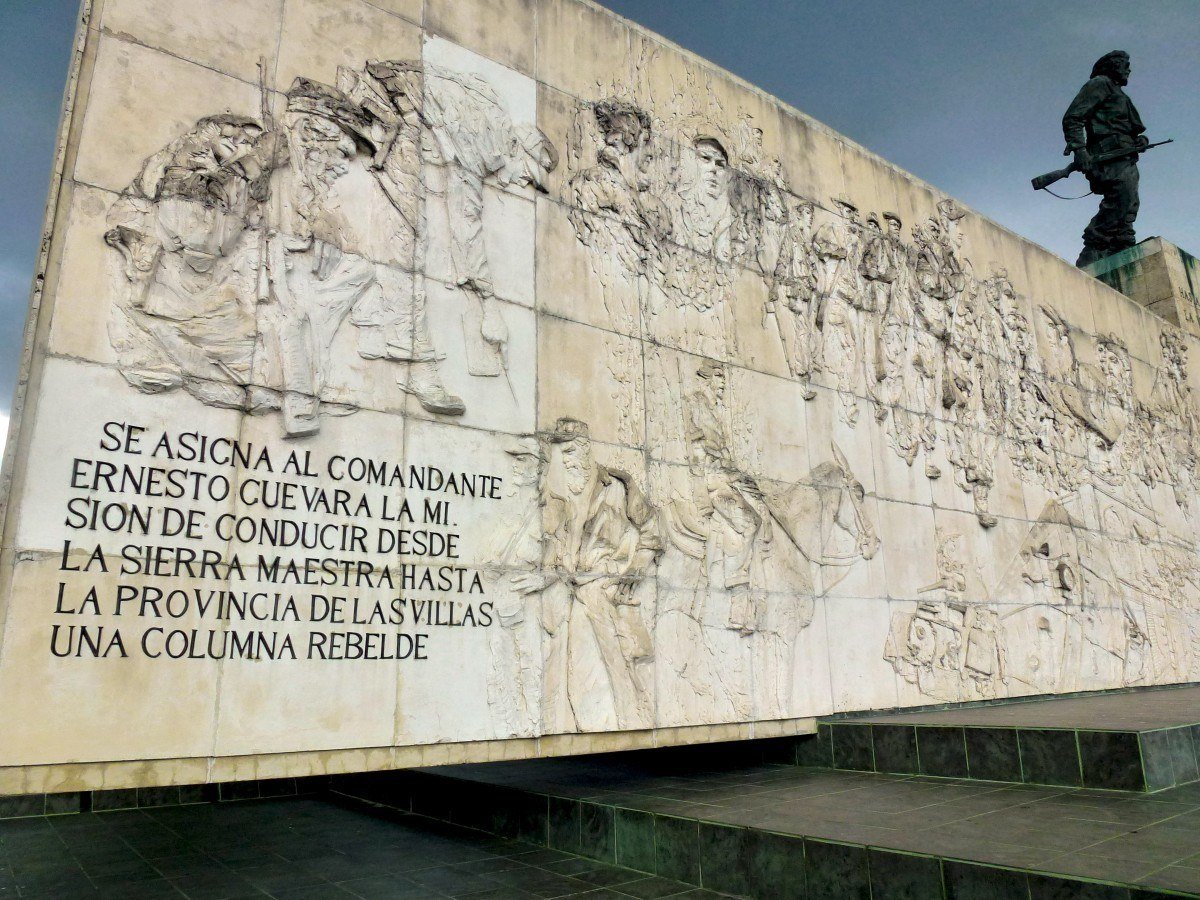
If you didn’t go to a cigar factory back in Havana, check out the cool Fabrica de Tabacos Constantino Perez Carrodegua factory. You can take a laid-back tour of the factory and sip locally roasted coffee—cigar in hand— at tours end.
Take in the pulse of modern life in Santa Clara at Club Mejunje. Any given night of the week there is something interesting on here. Art shows, salsa night, and even Cuba’s only drag show…
For an even more locals-only type spot, head to Parque Leoncio Vidal. Bring a takeaway dinner (or a bottle of rum) and hang out with locals enjoying family/friend time in the park. This place gets pretty rockin’ on the weekends FYI.
Backpacking Parque Nacional de Turquino
The mountains and dense jungle that make up Parque Nacional de Turquino also include an area known as the Sierra Maestra. Why is the Siera Maestra important? For one, it was the base of Fidel Castro’s rebel army for a majority of the Cuban revolution.
It’s easy to see why Fidel chose this part of Cuba. The high mountains (averaging 4,500 feet) are draped in thick tropical vegetation, mist, and well, plenty of places to hide.
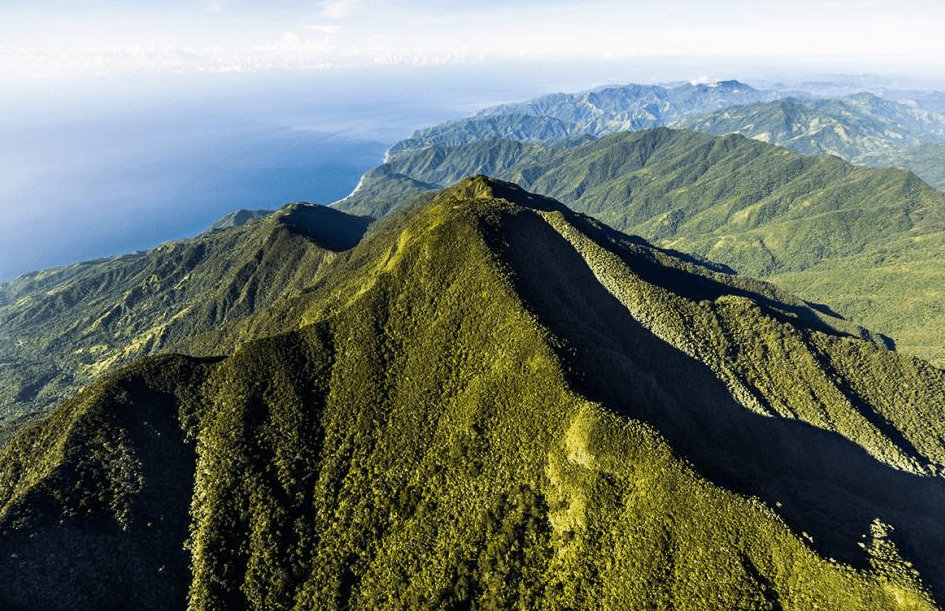
To familiarize yourself with the park, you can climb Pico Turquino. It is the tallest mountain in Cuba at 6476 feet. A hell of an adventure and epic views of sprawling tropical forest await. There are various routes to choose from to get to the summit—each of which will take you at least 2-3 days round trip.
Unfortunately, guides are mandatory in order to tackle this hike. I do not have any information about doing this hike independently, other than it is technically forbidden. The police may or may not enforce this. Definitely hike Pico Turquino in the dry season.
Since guides are mandatory, they can be arranged through Flora y Fauna employees at Villa Santo Domingo or at the small hut at Las Cuevas.
Backpacking Santiago de Cuba
Located on a bay in Cuba’s far southeastern corner is Santiago de Cuba. Cuba’s second largest city is known for its distinctive Afro-Cuban cultural influences, revolutionary history, and stunning colonial architecture (most of Cuba’s urban architecture is pretty alright).
The Castillo de San Pedro de la Roca del Morro is a wonderfully positioned 17th-century UNESCO world heritage site. It’s a bit out of the city (10 km southwest), but the views of the sea and the surrounding Sierra Maestra make it well worth the effort to get here.
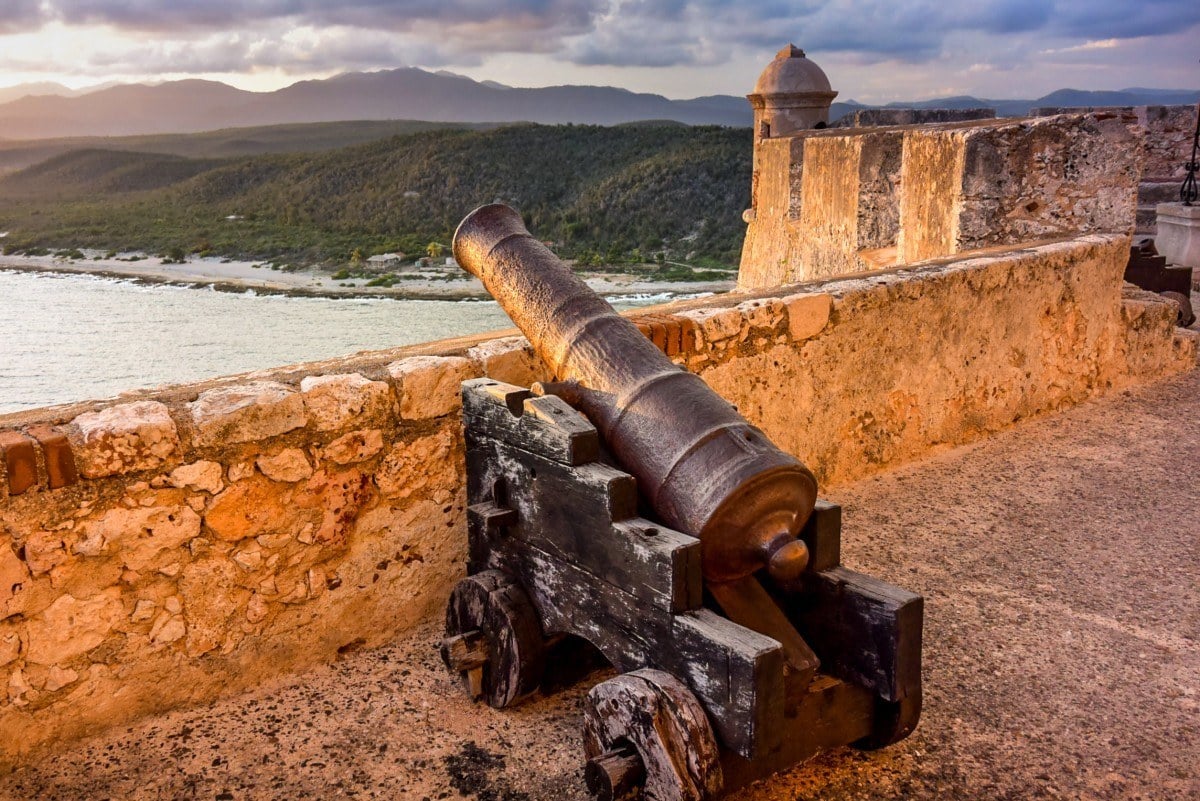
For music lovers, a night at the Casa de las Tradiciones will be one for the ages. There are many hidden gem and hole-in-the-wall music venues in Cuba, and Casa de las Tradiciones is one of them. Spend a few hours taking in the scene at the often crowded, smoke-filled bar, and get the essence of what backpacking Cuba is all about.
Carnival in Santiago de Cuba (July) is a real treat. If you happen to be in Cuba during July, plan on spending 10 days in Santiago de Cuba for a marathon period of parades, music, rum, and dancing.
Backpacking Baracoa
Cuba’s oldest colonized city is Baracoa. Located on the eastern tip of the island, Baracoa receives a fair bit more rainfall than other parts of Cuba, and the result is a lush green, dazzling subtropical landscape. Baracoa isn’t super easy to reach due to it being in the far corner of Eastern Cuba, but I’d say it’s worth the effort to get there.
It is possible to visit some of the awesome cocoa and coconut plantations that dot the rural interior around Baraco, though the main attraction in Baracoa is the canyon of the Yumuri River. That said, if you just want to hang out in the town center, play some dominoes, and relax on the beach, I understand.
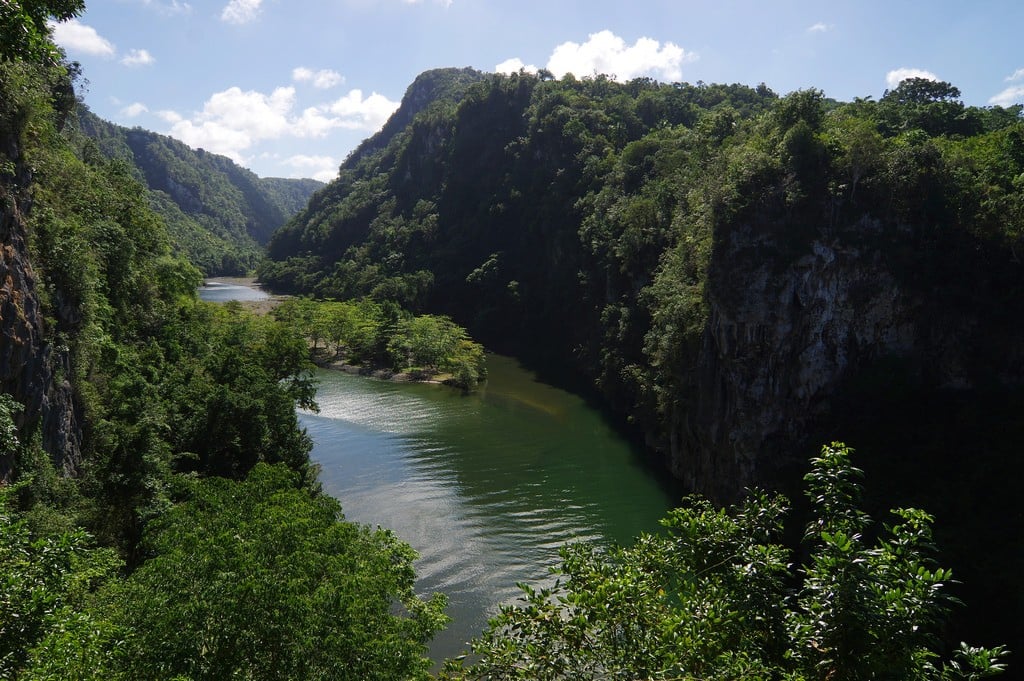
The Yumuri Canyon looks like something out of the Lost World. In my opinion, you can’t visit Baracoa without seeing the canyon and the river. The water is a clear turquoise-blue and the vegetation snakes its way up the steep canyon walls in a sea of green and tangled vines. Hiring a boat is the best way to see the canyon and all it has to offer.
From Baracoa, Playa Manglito beach is just a short taxi ride (or hitchhike ride) away.
Backpacking Sancti Spíritus
For an authentic, small-town experience in Cuba, head to colorful Sancti Spíritus. There is definitely a gringo route in Cuba and Sancti Spíritus is not on it.
You’ll find that tourism is not booming here like it is in Trinidad or Vinales. If you want an honest glimpse into what life is like in a Cuban town far from the influences of tourism, Sancti Spíritus is a sure bet for that.
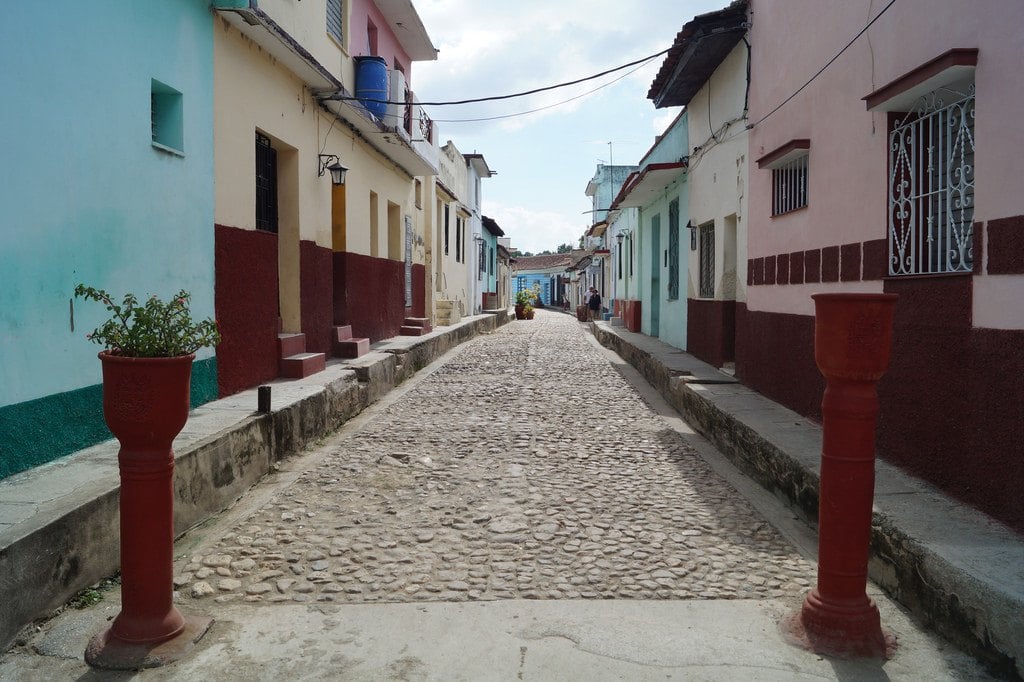
The Taberna Yayabo down by the river is a fine place to grab a drink and hang out with locals. For live music, head to the Uneac Club.
There aren’t a ton of “must see” attractions in Sancti Spíritus and that is what makes it so special. If you’re looking to improve your Spanish and get off the beaten path, you’ll feel right at home here.
Off the Beaten Path in Cuba
Perhaps more so than in any other Caribbean nation, getting off the beaten path in Cuba isn’t difficult. For one, the island is fairly big and large-scale, wide-spread tourism infrastructure does not exist (yet).
To get the most out of your backpacking Cuba adventure, getting off the beaten path will allow you to experience life like the locals, which is crucial to understanding and capturing the magic that is Cuba.
If you are sailing the Caribbean, it’s very easy to put Cuba on your itinerary. The wild north coast of Cuba is not heavily trafficked by foreigners, making it a prime candidate for exploration.
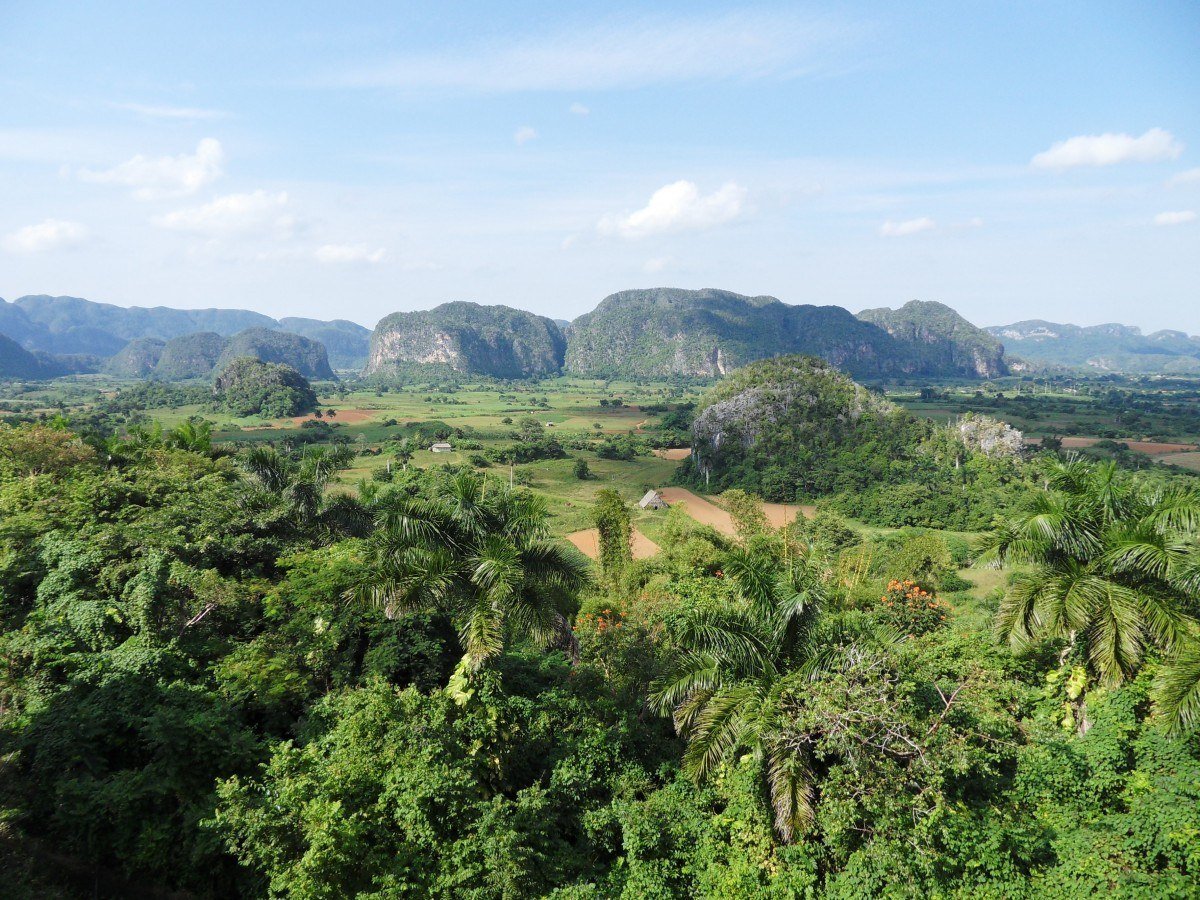
The small towns and villages in the rugged and remote interior are full of untapped cultural gems and beautiful natural landscapes.
Like I said, there are also a handful of beaches that are the “known, famous” beaches. Some of the best beaches in Cuba are not famous and do not see the same tourist hordes as the others.
Because tourism in Cuba is a relatively new phenomenon, backpacking Cuba independently isn’t always easy for certain activities.
Camping and doing a bit of cooking for yourself is also very crucial to getting off the beaten path in Cuba. If you are self-reliant, you can really discover a whole other side of Cuba.
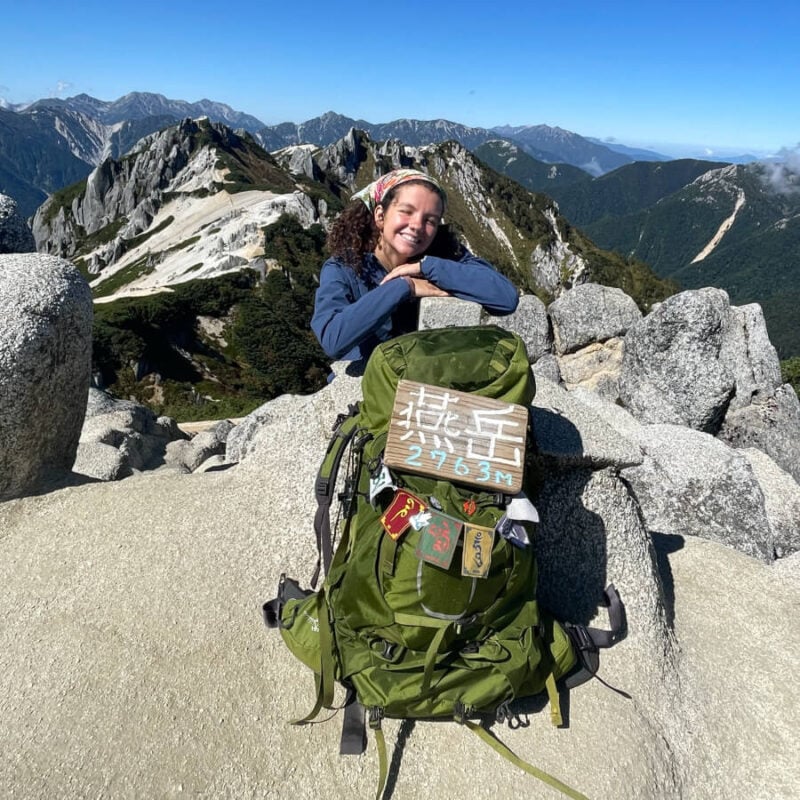
We’ve tested countless backpacks over the years, but there’s one that has always been the best and remains the best buy for adventurers: the broke backpacker-approved Osprey Aether and Ariel series.
Want more deetz on why these packs are so damn perfect? Then read our comprehensive review for the inside scoop!
View on Osprey View on REITop Things to Do in Cuba
Below I have listed the 10 best things to do in Cuba:
1. Explore Old Town Havana
Cobblestone streets, classic cars, and beautiful brightly-painted townhouses that transport you back in time? That is La Havana Vieja.

Photo: @taya.travels
2. Go to a Baseball Game in Cuba
Cubans are mad about baseball, their national sport. Catch a game at the Estadio Latinoamericano, or at another one of Cuba’s fine baseball parks.
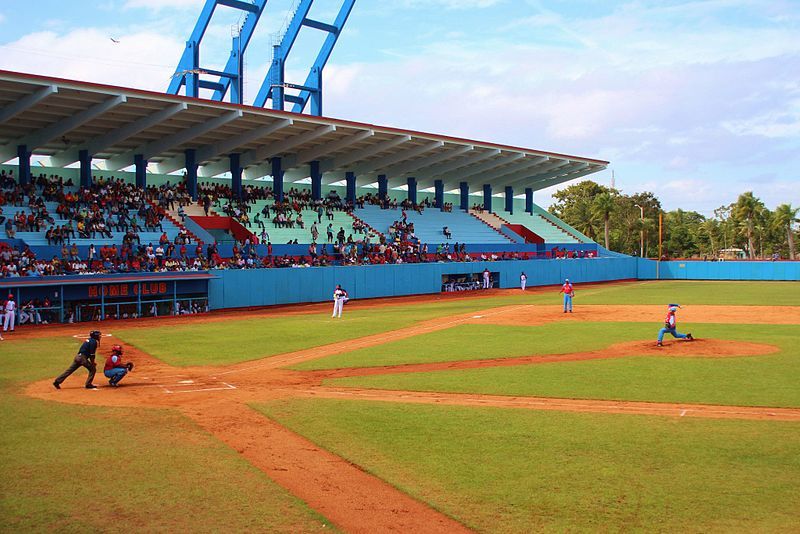
3. Go Scuba Diving
Cuba is blessed with some truly excellent scuba diving opportunities. The best part? Diving is affordable in most places!
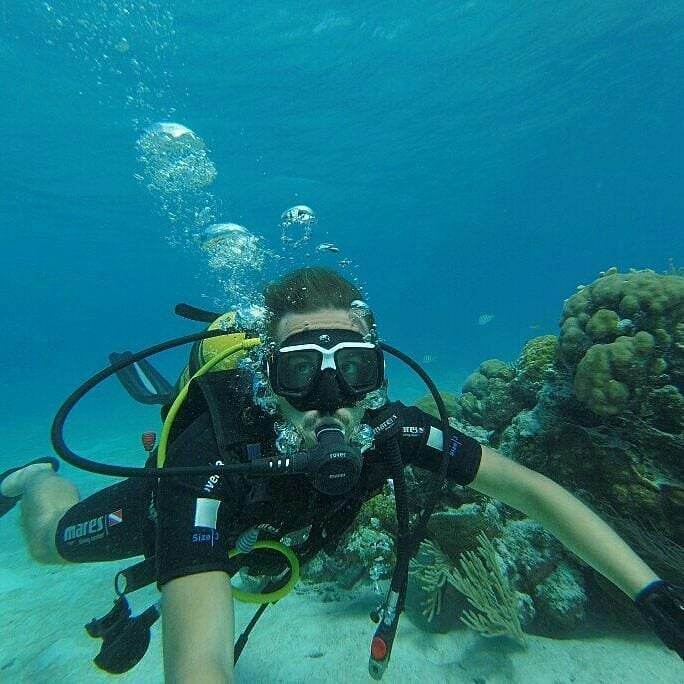
Photo: Andrea Cacciatori
4. Visit a Tobacco Plantation
Visit the plantations where the island’s legendary tobacco is grown.
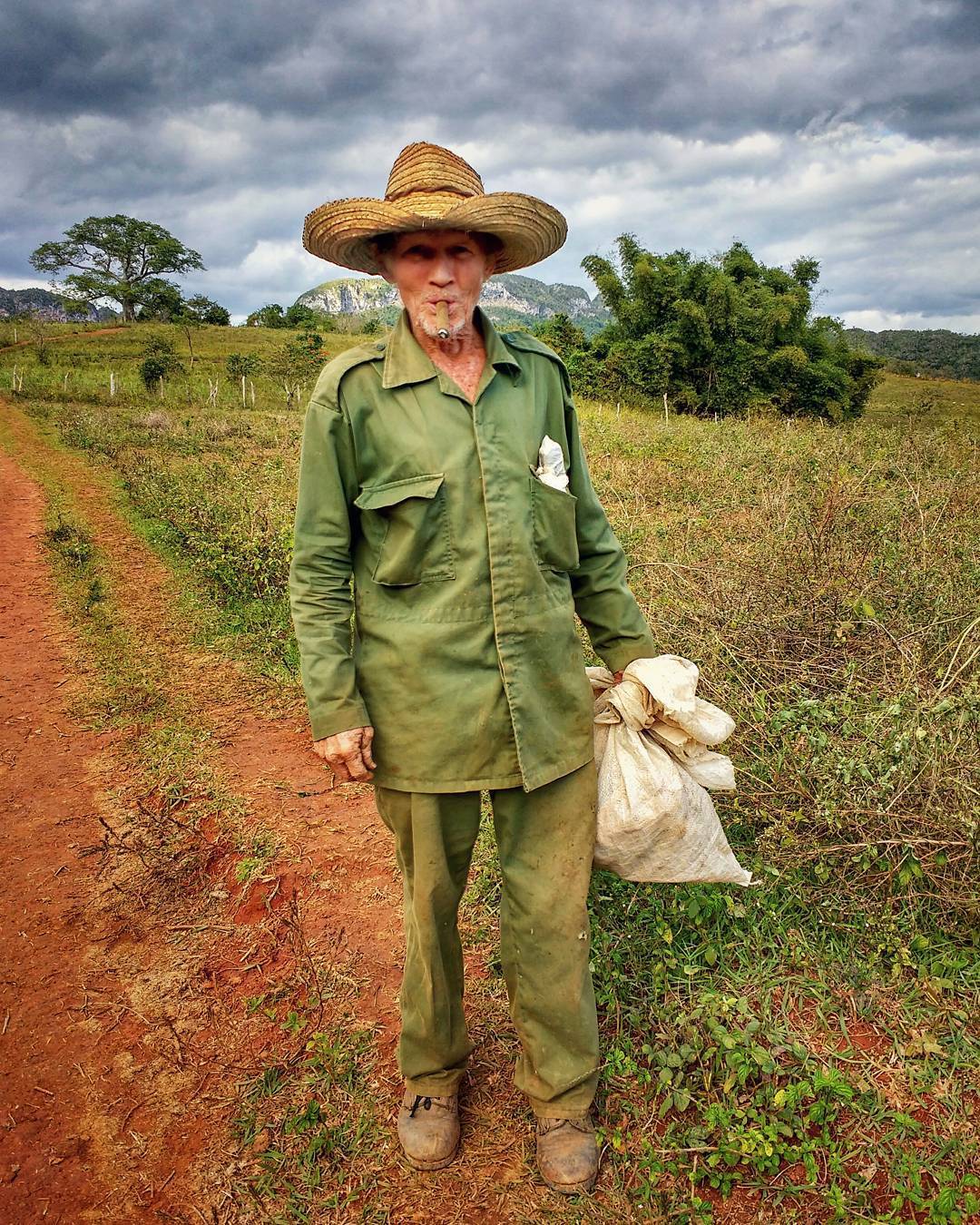
Photo: Andrea Cacciatori
5. Go to the Vegas Grande Waterfall
This few hour day hike out and back to one of the prettiest waterfalls in Cuba was one of the best things we did on our entire trip. If you go to Trinidad, this waterfall hike is an absolute must.
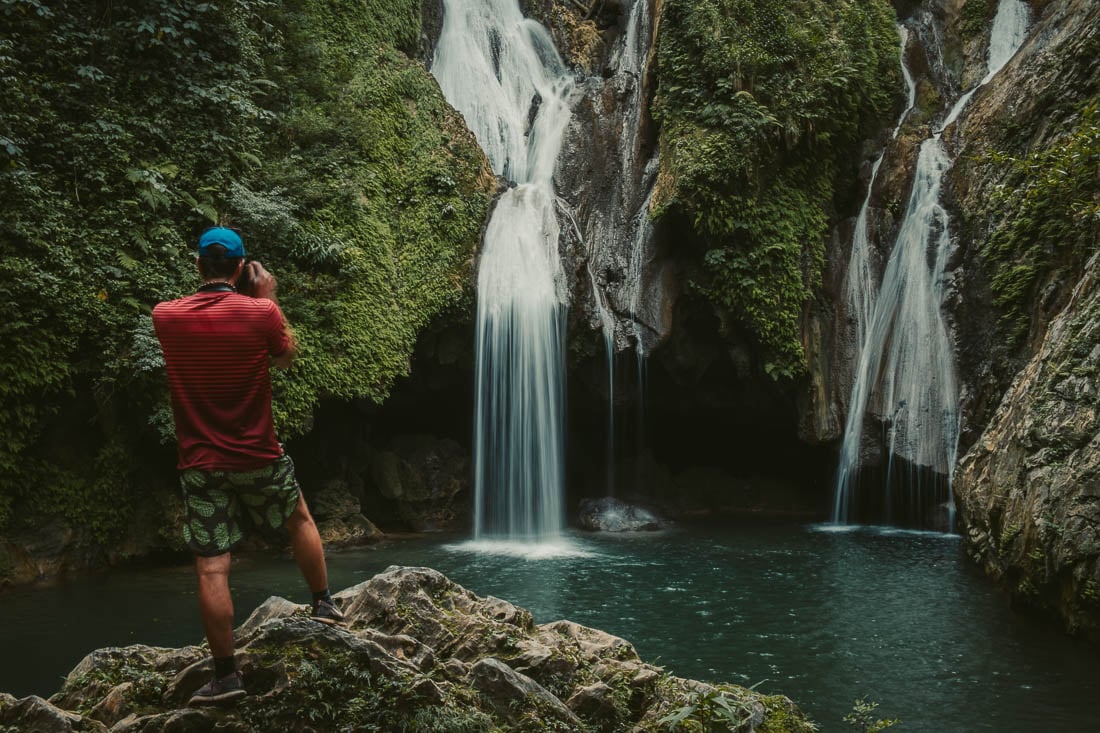
Photo: Chris Lininger
6. Visit the Che Guevara Moslouem and Museum in Santa Clara
Che Guevara is one of the most important and iconic revolutionary figures from the 20th century. His legacy in Cuba is forever enshrined in his museum in Santa Clara.
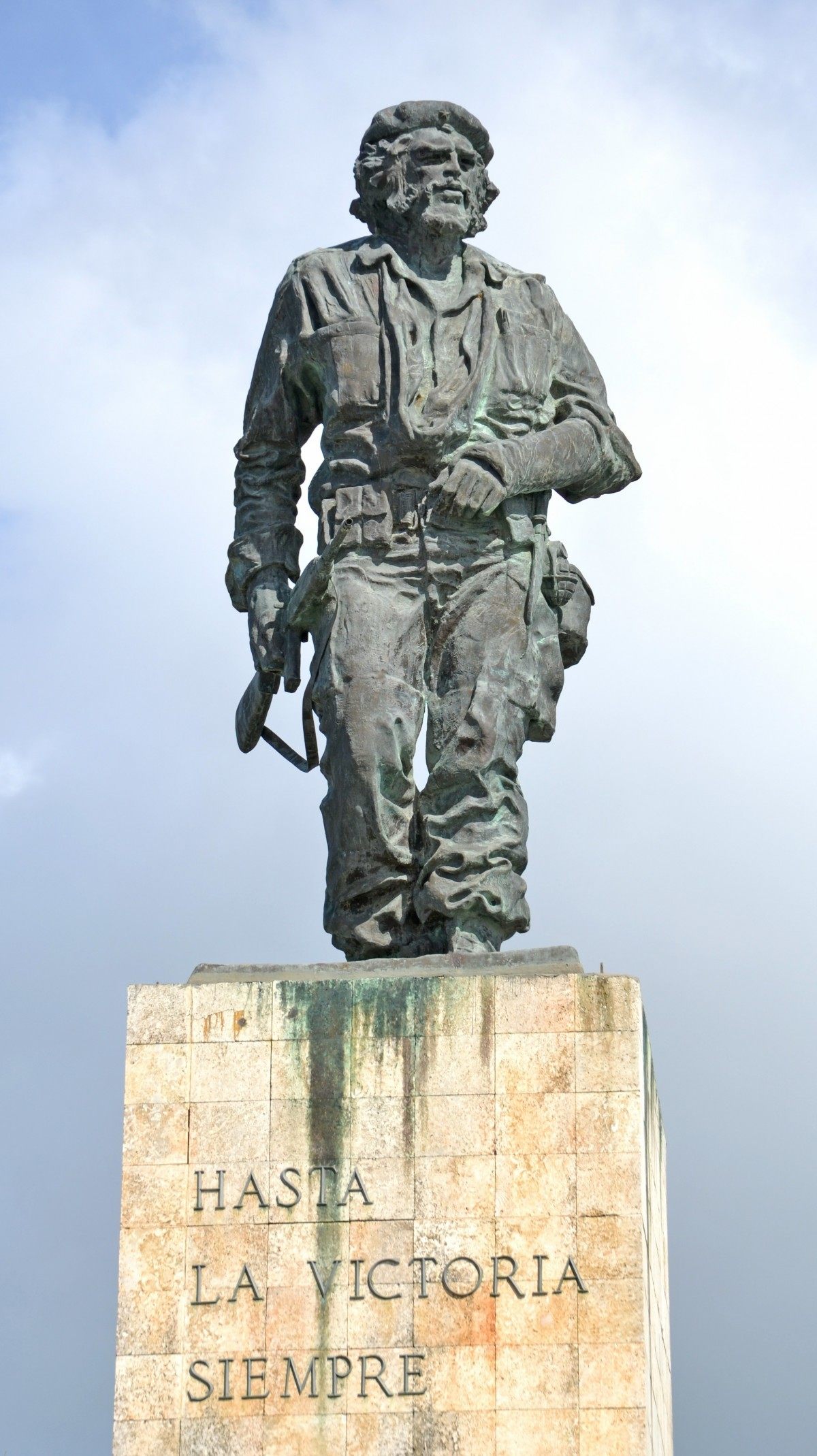
7. Climb Pico Turquino
Scale Cuba’s highest mountain for an epic multi-day Cuban adventure.
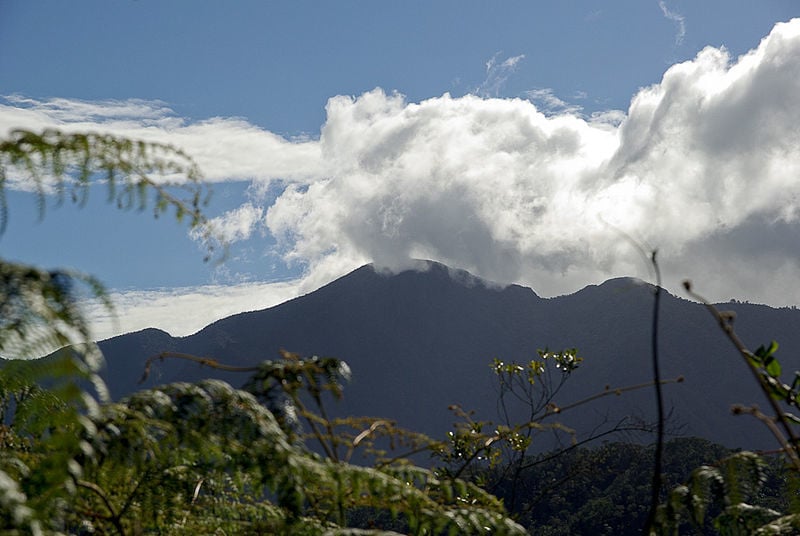
8. Explore the Vinales Valley by Bike
Vinales and the surrounding area offers up some of the most beautiful scenery in all of Cuba. The beaches nearby aren’t so bad either.
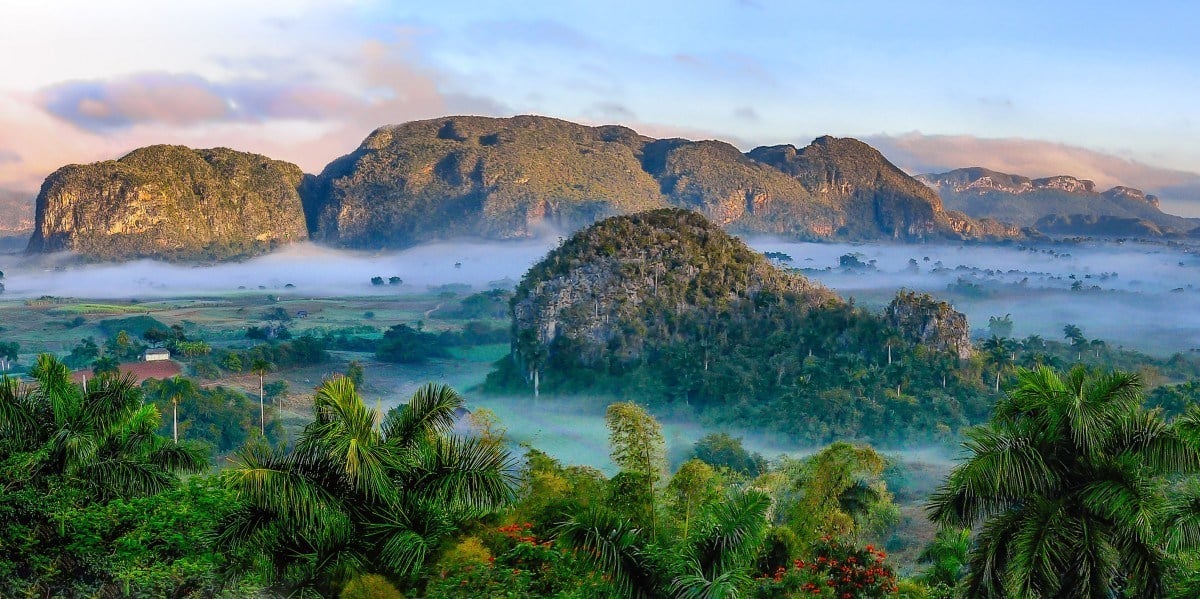
9. Hire a Classic Car
You’ll find classic cars all over Cuba. There is perhaps no better way to see the island than from behind the wheel of a ’62 Bel Air.
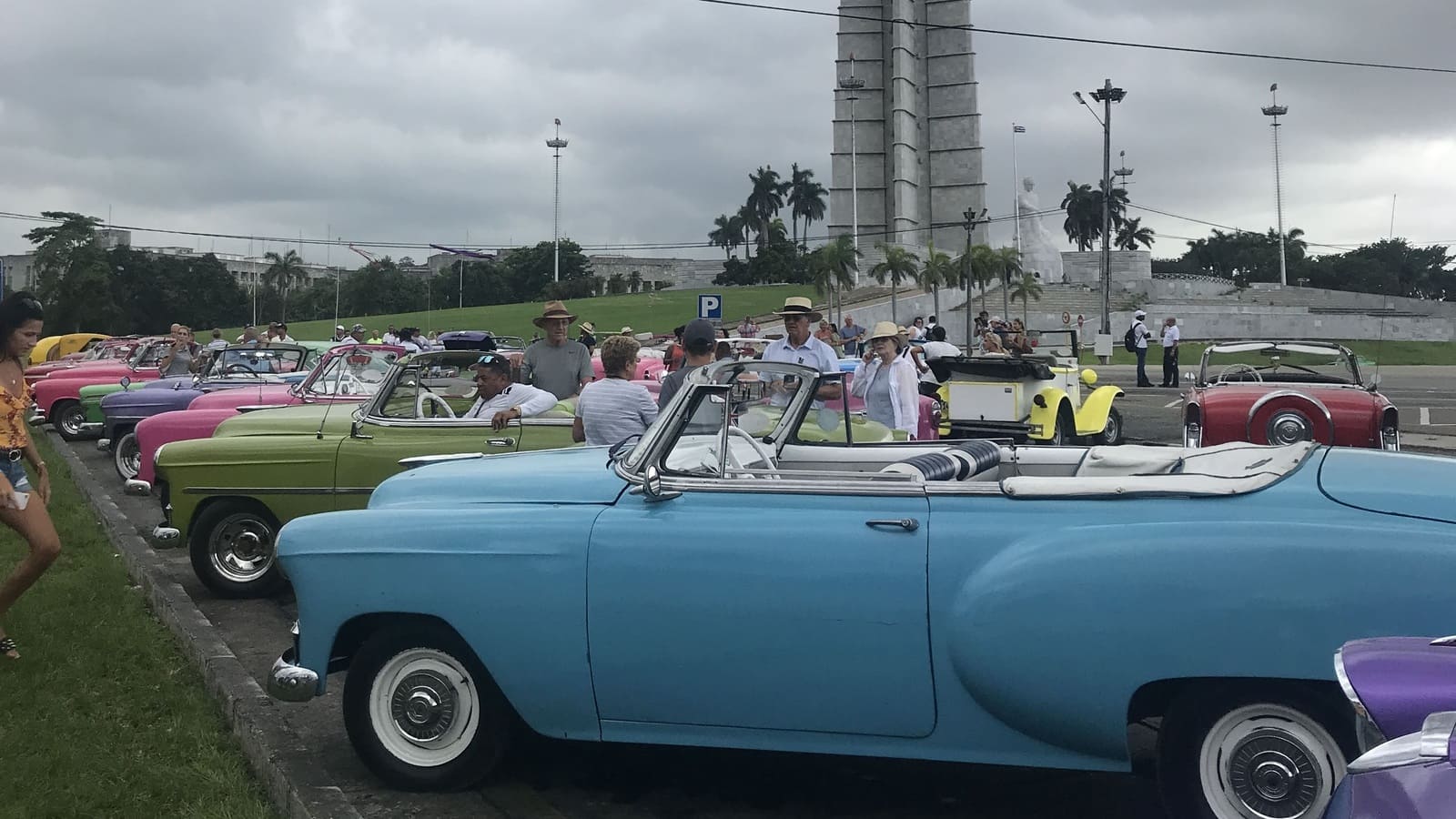
10. Experience Carnival in Santiago de Cuba
Like in most Latin American countries, Carnival is a big deal. Cuba is no different. Come and experience the biggest festival on the island, and remember to pace yourself… it is indeed a marathon.
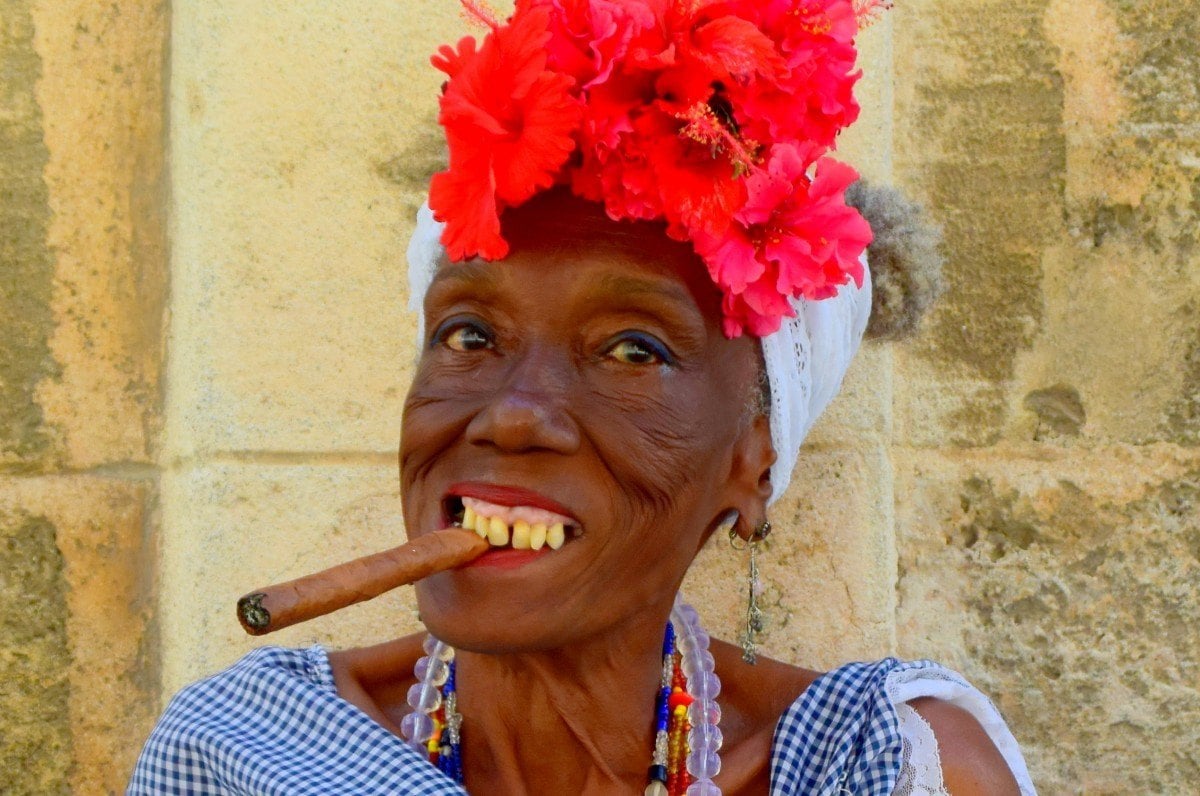
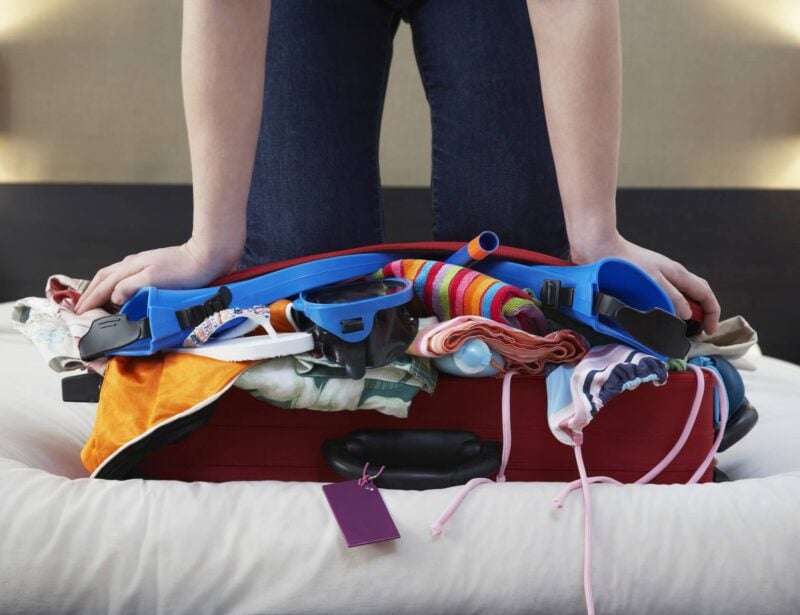
Wanna know how to pack like a pro? Well for a start you need the right gear….
These are packing cubes for the globetrotters and compression sacks for the real adventurers – these babies are a traveller’s best kept secret. They organise yo’ packing and minimise volume too so you can pack MORE.
Or, y’know… you can stick to just chucking it all in your backpack…
Get Yours Here Read Our ReviewBackpacker Accommodation in Cuba
Finding backpacker accommodation in Cuba is not always easy. There are just a handful of hostels on the island as of now. Though luckily, the hostels that do exist are often found right where you need them, along the Cuba backpacking route.
Surprisingly, Havana alone has over 100 hostels! I’m sure in the years to come, there will be an explosion of hostel development throughout the rest of Cuba.
When hostels are not available, the next best thing is casas particulares. Casas Particulares are basically glorified homestays of typically solid and dependable quality (and less expensive than hotels). There are TONS of casas particulares throughout Cuba. Whilst you don’t get the same vibe as you do at backpacker hostels, I would argue that the overall experience (especially from a cultural perspective) is better.

Photo: @taya.travels
Many casas particulares do not have websites (another new phenomenon in Cuba is business marketing). If you want to book a night in another casa particular, simply ask your host to phone a friend in the next town over and you’ll be sorted.
Hotels are without a doubt the most expensive option in Cuba, and a great way to eat a huge hole in your budget. Also, I’d avoid all-inclusive resorts like the plague.
We used Airbnb a few times too. You can find some solid options on there including casas paticulares.
| Destination | Why Visit? | Best Hostel | Best Private Stay |
|---|---|---|---|
| Havana | Welcoming atmosphere and charismatic people. Once a luxurious city, today seems to be a post-war city. 60’s cars and historic places to enjoy. | Hostel Cuba 58 | Attic style apartment |
| Viñales | A valley to feel the authentic and relaxed Cuban culture – with the best mangos in the world! Tobacco farms, prehistoric caves, and outdoor activities. | Villa Maceo y Gladis | Casa Margarita |
| Cienfuegos | Charming colonial city (more relaxed than Havana) with an impressive botanical garden, and a natural park full of waterfalls nearby. | Hostal Carlos&Odalys | Hostal Navarro |
| Trinidad | A picturesque colonial town between the mountains, Caribbean beaches, and waterfalls. It’s the perfect place to slow down your trip. | Hostal Alcuria | Casa Magdalena |
| Playa Larga | Diving and snorkeling paradise. In a bay, this place has white sand, crystal clear water, and palm trees. Dreamy beach (except for the mosquitoes). | Casa Alex | Casa Yoan y Zoyli |
| Santa Clara | Iconic city of the Cuban revolution. They love Che Guevara and you’ll see it here more than anywhere. A good example of a more typical Cuban city. | Hostal La Caridad | Ítaca minimalist hostel |
| Santiago de Cuba | This historic colonial city with Afro-Cuban cultural influences is the birthplace of trova, son, and revolution. This is the authentic laid-back vibes Cuban culture. | Casa Don Pedro | Casa Azul |
| Baracoa | The oldest colonial city in Cuba. This place has a stunning natural bay surrounded by mountains and incredible views. You need to try their coffee and cocoa. | Ynes & Yadier House | Casa Yindra y Ruben |
| Sancti Spíritus | An authentic, small-colonial town experience in Cuba. Colorful buildings and narrow streets, this could be a relaxing stop after those touristy places. | Hostal Boulevard | 1900s family mansion |
Wild Camping in Cuba
Wild camping is legal in Cuba; I never heard otherwise. There are plenty of awesome places to pitch your tent. Obviously, the mountains and the Sierra Maestra are ideal camping candidates (if you want to follow in the revolutionary soldiers’ footsteps).
You might find camping to be rather uncomfortable at low elevations on the coast. Cuba is hot and humid and the mosquitoes can be insane! Coastal camping might prove to be more trouble than it is worth. Pray for a breeze if you wind up camping at the beach!
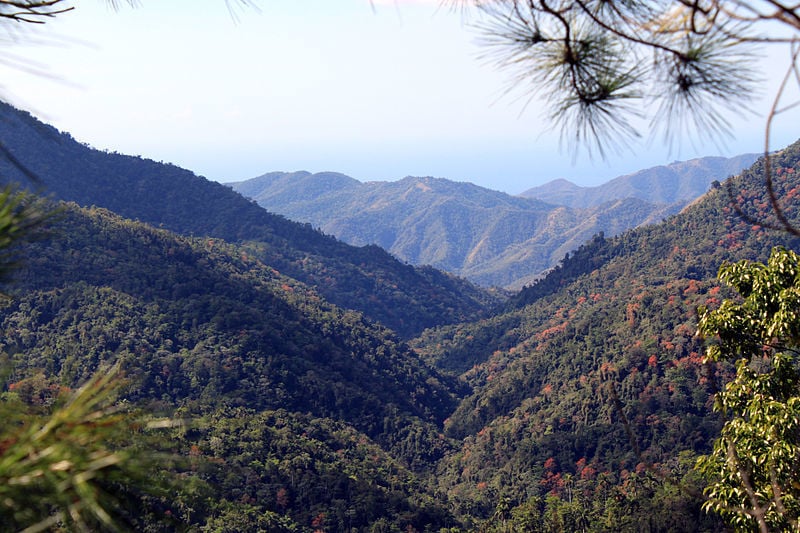
If you are unsure if a potential campsite is on private land, at least make an effort to ask the owner, if you can get by the language barrier that is—Spanish isn’t too hard, you can do it!
In general, if you pitch your tent around dusk and are gone by 7 am or so, no one should hassle you.
Get familiar with “leave no trace principles” and put them into practice.
If you are in the market for a solid, lightweight, and reliable tent, I highly recommend the MSR Hubba Hubba 2-person tent. This compact tent is up to the challenge of battling Cuba’s subtropical weather. To get to know this tent better, check out my in-depth MSR Hubba Hubba Review.
Cuba Travel Costs
Backpacking in Cuba is neither super cheap nor crazy expensive. Your biggest costs for backpacking in Cuba will be your accommodation and food.
Solo travel in Cuba is a bit of a bitch in regards to the cost of accommodation and transportation. If you are a couple or a group of several friends, splitting the cost of rooms and taxis will save you cash.
A reasonable daily budget for backpacking Cuba is between $40-70 USD/day. With this amount, you can eat well, do fun stuff, take a few cab rides, split a private room, and knock back a few mojitos.
Certainly, Cuba can be done on a barebones broke backpacker style budget, but that would require cooking for yourself (remember grocery stores are shockingly bare) and using Couchsurfing/camping out (for free).
A Daily Budget in Cuba
Here is what you can expect to spend on a daily basis whilst backpacking Cuba:
| Expense | Broke Backpacker | Frugal Traveler | Creature of Comfort |
|---|---|---|---|
| Accommodation | $10-15 | $15-20 | $30-50 for nice Airbnb |
| Food | $7-15 | $10-25 | $25-40 |
| Transport | $1-3 (bike taxi in Havana) | $40 (1 hour taxi) | $300+ for long distance taxi shared with your friends. |
| Nightlife | Stay Sober (or by cheap aguardiente) | $3/mojito | $15/night of drinks |
| Activities | Beach – Free | $10-20 | $60 / 2 scuba dives |
| TOTAL | $20-30 | $50-70 | $100/170 |
Money in Cuba
As of January 1st, 2021 Cuba’s money situation got a whole lot easier. Previously, there were two currencies in use, but these days there’s just one, the CUP, also known as the Cuban Peso.
Find out how much your money is worth today by using the up-to-date converter below.
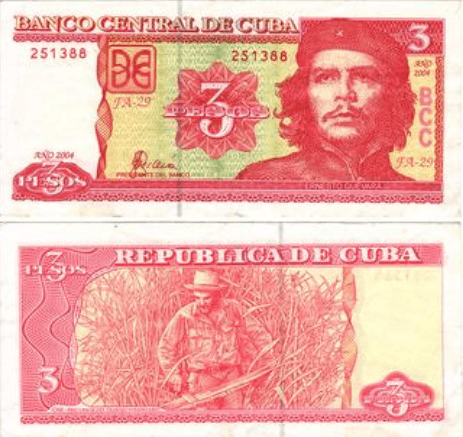
My Experience With Cuban Money
Keep in mind that if you bring plenty of cash (which you need to do) into Cuba you might lose as much as 10% when you convert it to Cuban money if you change it at the airport – which FYI you should NOT do!
We found changing money on “the black market” super easy. Just ask the host of your casa particular about changing money and they will likely give you the fair 1:1 rate. We never had any problems changing money around Cuba – just never do it at the bank or at an official money changer otherwise you will lose a lot of money in the exchange.
Cuba Travel Tips
Top Tips For Broke Backpackers
- Camp: With plenty of gorgeous places to sleep out, Cuba can be a great place to camp in the rural areas or in the mountains. Check out this post for a breakdown of the best tents to take backpacking.
- Cooking: If you are camping a lot or really want to save some cash, it could be worth bringing a portable backpacking stove so you can do some of your own cooking.
- Couchsurf: Cubans are awesome; get to know some! Check out Couchsurfing to make some real friendships and see this country from the perspective of locals. Obviously, things have changed in times of Covid – so Couchsurfing may be on hold for a couple of years.
- Hitchhike: Where appropriate, hitchhiking is a great way to save money on transportation costs.
Why You Should Travel to Cuba with a Water Bottle
Plastic washes up on even the most pristine beaches… so do your part and keep the Big Blue beautiful
You aren’t going to save the world overnight, but you might as well be part of the solution and not the problem. When you travel to some of the world’s most remote places, you come to realise the full extent of the plastic problem. And I hope you become more inspired to continue being a responsible traveller.
Plus, now you won’t be buying overpriced bottles of water from the supermarkets either! Travel with a filtered water bottle instead and never waste a cent nor a turtle’s life again.
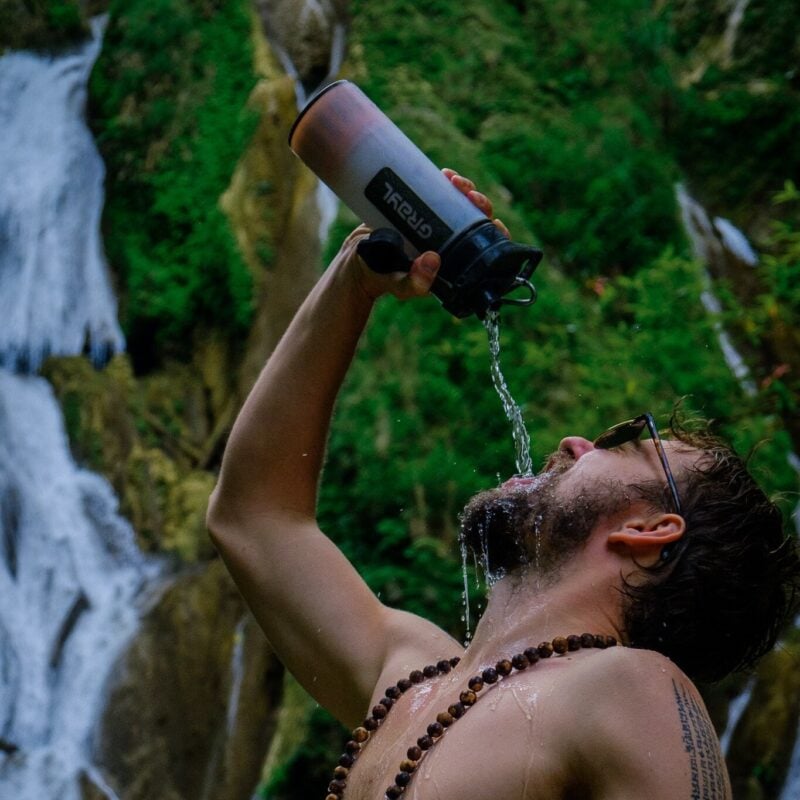
Drink water from ANYWHERE. The Grayl Geopress is the worlds leading filtered water bottle protecting you from all manner of waterborne nasties.
Single-use plastic bottles are a MASSIVE threat to marine life. Be a part of the solution and travel with a filter water bottle. Save money and the environment!
We’ve tested the Geopress rigorously from the icy heights of Pakistan to the tropical jungles of Bali, and can confirm: it’s the best water bottle you’ll ever buy!
View on REI Read the ReviewBest Time to Travel to Cuba
As Cuba is a Caribbean island, it enjoys fairly mild weather year round…with a few exceptions.
The best time to visit is from December to May, when you can expect dry, sunny days and plenty of blue skies. For trekking and scuba diving in Cuba, dry season makes outdoor activities more enjoyable and/or doable.
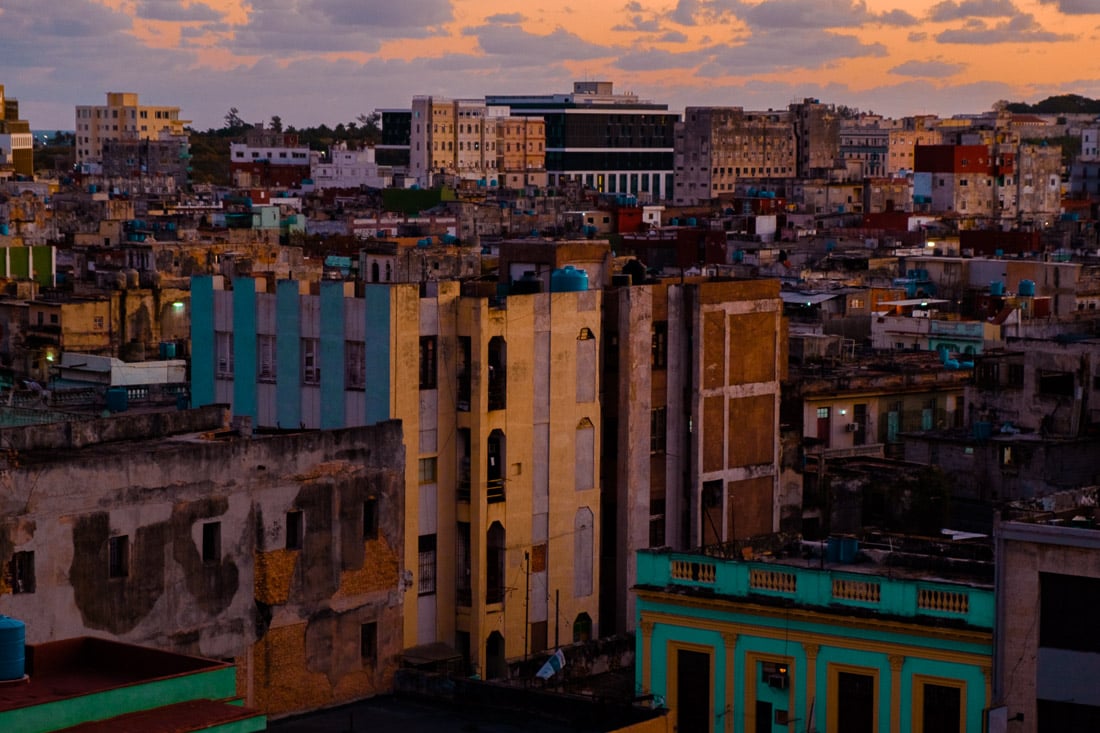
Photo: Chris Lininger
The wet season begins in June and, usually, tourists avoid travel in Cuba entirely between August and October, when there is also a risk of hurricanes. Hurricane season in Cuba is NOT to be underestimated. I would avoid coming to Cuba in Late September/ October all together, mostly because I love to dive.
That said, you will find lower prices and fewer tourists in September and October. Also you could be lucky and have long stretches of fine weather (save for a little bit of rain). Get your haggle game ready and you can score some seriously good deals on things like car rentals, accommodation, and food.
Pick up a good rain jacket, especially if you plan on visiting during the hurricane season. Check out my list of the best jackets to take traveling. Having a waterproof backpack does have its advantages as well.
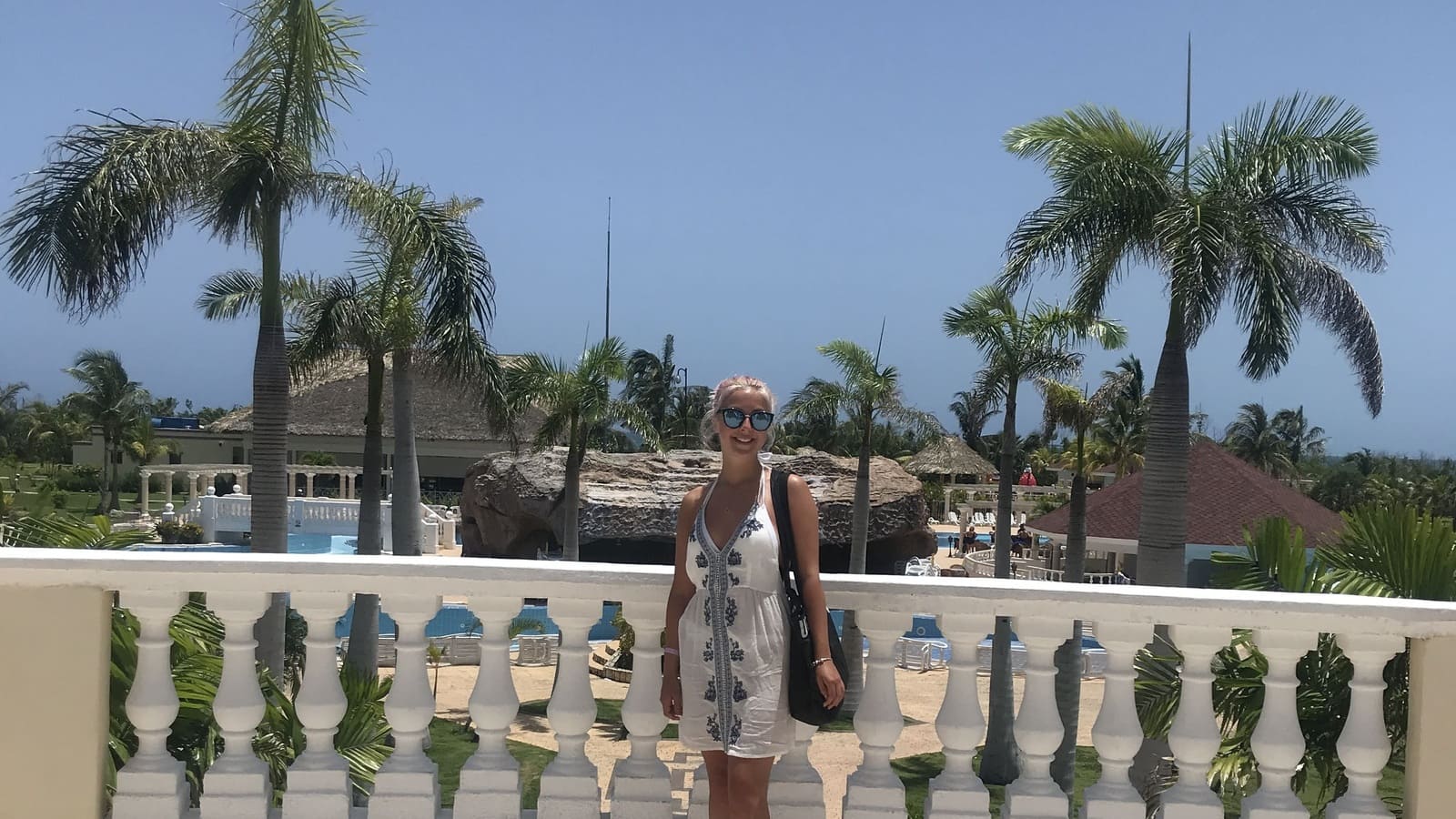
Photo: @taya.travels
Prices in Cuba are at their highest from December—March FYI.
Festivals in Cuba
There is always something fun to get into in Cuba. Depending on the time of year you find yourself backpacking in Cuba, there are many cool festivals to check out. Here are a few of the top festivals in Cuba:
- Havana International Book Fair – February: Actually this event is held all over Cuba. The book fair is attended by book lovers, publishers, writers and celebrities. Apart from book sales, the event includes lectures from some of the authors, theatre and dance performances, and film sessions.
- Festival Del Habano – March: The is Cuba’s most important festival for cigars. It attracts cigar lovers from all over the planet.
- May Day Celebrations – May: The 1st of May is a special day in Cuba. It’s when Cuba honors workers of all classes and occupations celebrate national pride.
- International Electroacoustic Music Festival – March: Previously known as the Varadero Spring Festival, the Electroacoustic Music Festival is now held at different venues in Old Havana. It is an international event that attracts prominent composers and personalities of this genre from around the world.
- Carnival in Santiago de Cuba – July: Come on out for one of the biggest parties to be found in the whole Caribbean.
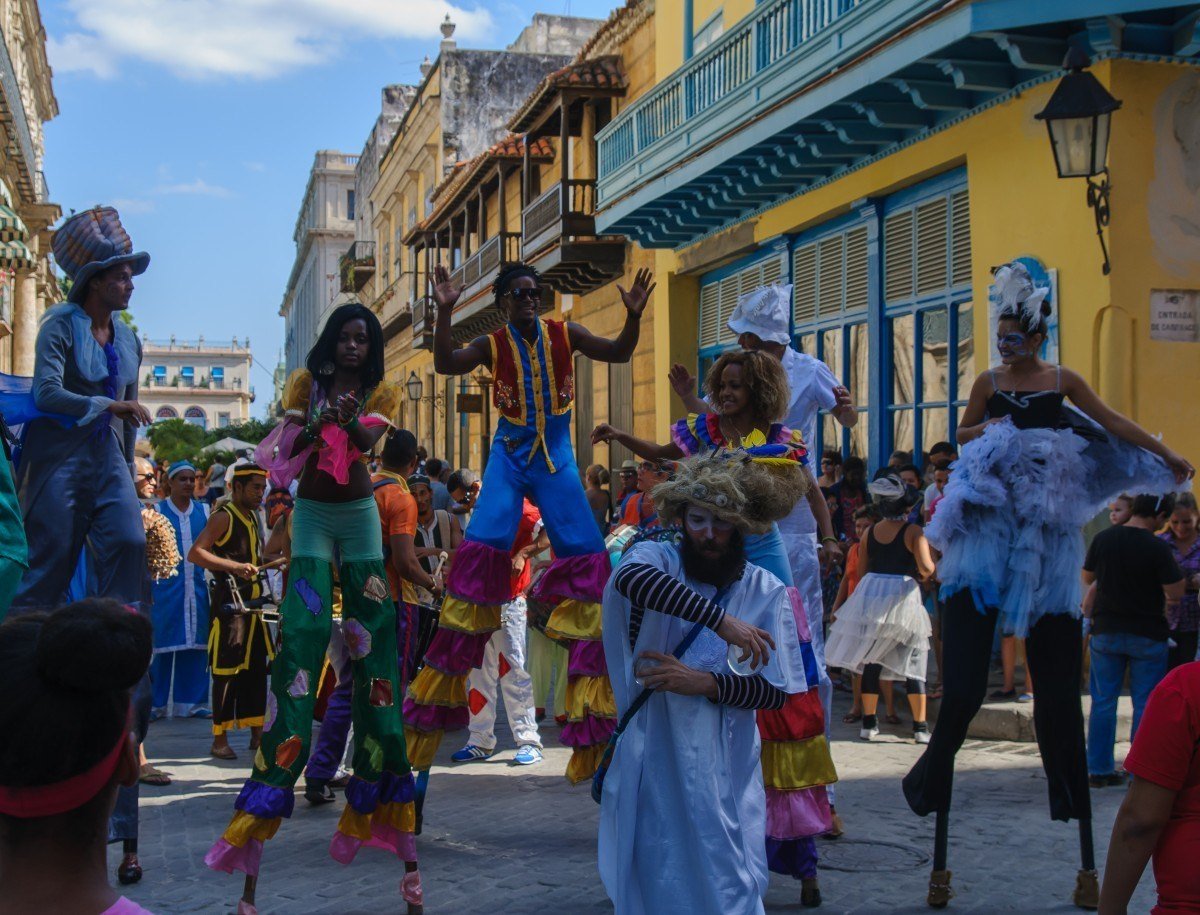
What to Pack for Cuba
Properly packing for Cuba is the first step to having a successful trip. On every adventure, there are six things I never go traveling without:
Ear Plugs
Snoring dorm-mates can ruin your nights rest and seriously damage the hostel experience. This is why I always travel with a pack of decent ear plugs.
Hanging Laundry Bag
Trust us, this is an absolute game changer. Super compact, a hanging mesh laundry bag stops your dirty clothes from stinking, you don’t know how much you need one of these… so just get it, thank us later.
Sea To Summit Micro Towel
Hostel towels are scummy and take forever to dry. Microfibre towels dry quickly, are compact, lightweight, and can be used as a blanket or yoga mat if need be.
Monopoly Deal
Forget about Poker! Monopoly Deal is the single best travel card game that we have ever played. Works with 2-5 players and guarantees happy days.
Grayl Geopress Water Bottle
Always travel with a water bottle! They save you money and reduce your plastic footprint on our planet. The Grayl Geopress acts as a purifier AND temperature regulator. Boom!
Staying Safe in Cuba
I am pleased to report that Cuba is one of the safest countries to visit in all of Latin America. Certainly, in terms of other Caribbean nations (like Jamaica for example), Cuba is super safe.
I have heard very little about backpackers being the targets of pickpockets, and even less so of violent crime (pretty much unheard of). Maybe the low crime rate is the result of an ultra-authoritarian government for 50+ years?
Maybe this safety situation is partly due to the extreme and authoritarian nature of the Castro regime spanning the last 50 years. Cubans don’t want the police (and especially the army) to visit them!
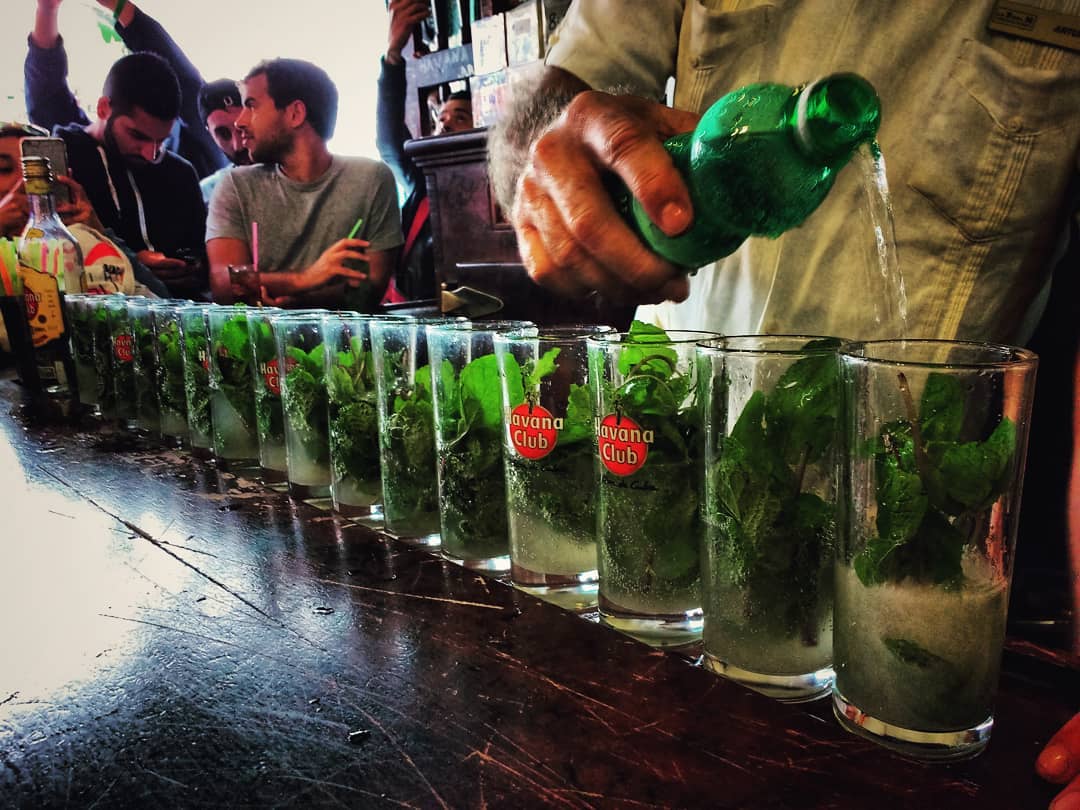
Photo: Andrea Cacciatori
If you are planning to rent a motorbike, always wear a helmet!
Though one thing to watch for are jineteros. Jineteros are dudes that will offer to take you to the closest casa particular…with a catch. What they don’t tell you is that upon arrival they expect (and will demand) a small payment from you.
Though Cuba is super safe it never hurts to take extra steps to protect your valuables.
Check out Backpacker Safety 101 for more tips and tricks to stay safe whilst backpacking in Cuba.
Sex, Drugs and Rock ‘n’ Roll in Cuba
Drug laws in Cuba are severe. Whilst you can get a way with smoking a joint or two, even buying weed can be risky. You also never know what you’re going to get. People may try to sell you cocaine that actually ends up being laundry powder!
I was asked by random dudes on the street if I wanted to buy both coke and weed and I was also approached by prostitutes three times in Old Havana. Once out of Havana, street hustlers pretty much left us alone.
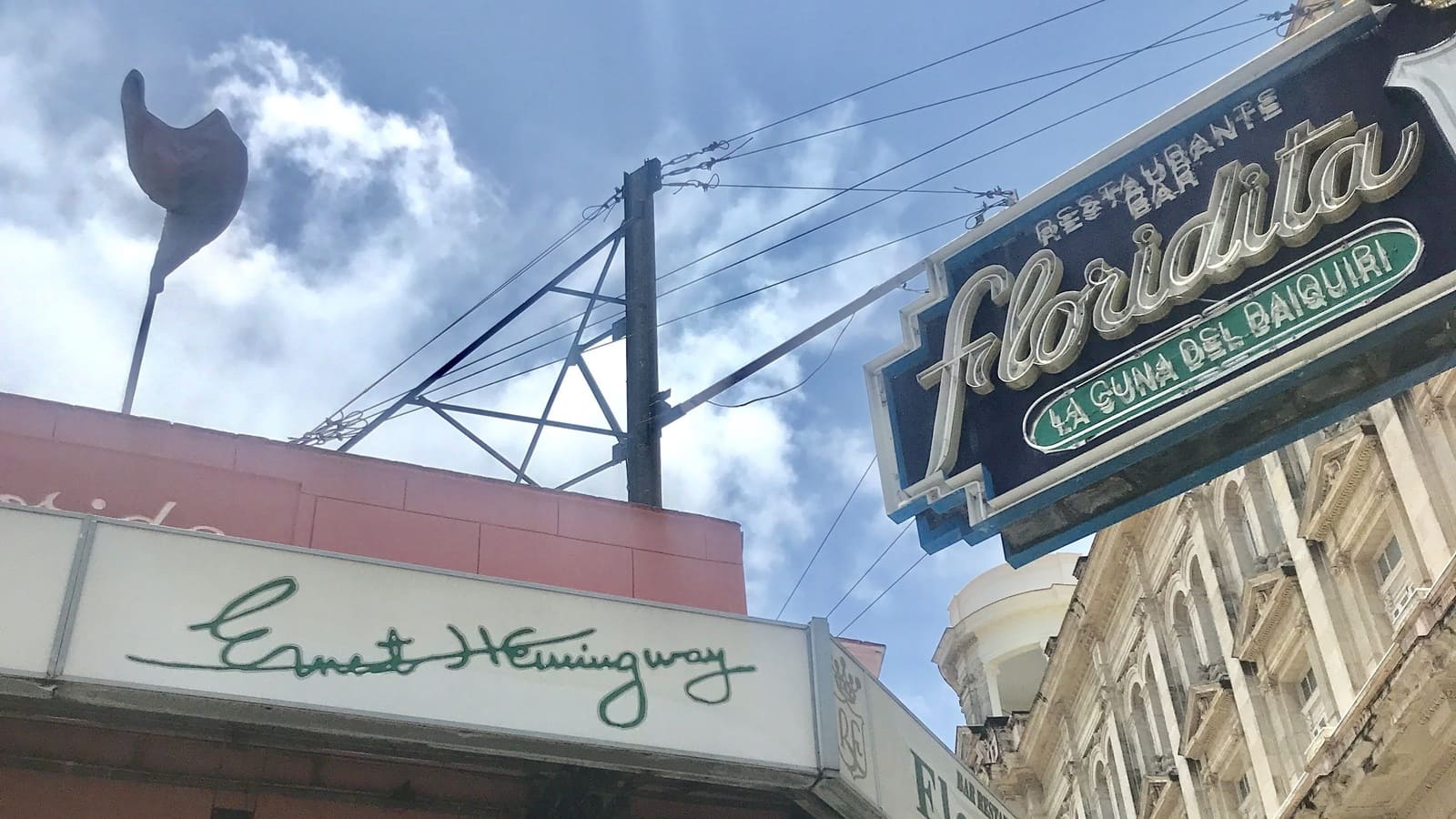
Photo: @taya.travels
The obvious drug of choice in Cuba is alcohol. You can buy it literally everywhere…and it’s pretty cheap too (you can find shots for as little as 12 cents!).
Maybe I am overreacting to the drug laws in Cuba, but seriously, you don’t want to end up in a fucking Cuban prison full of gnarly, hardened criminals/enemies of the state.
I suggest that if you befriend a local whom you TRUST, inquire where you might be able to discreetly buy a little pot. Certainly “where can I buy some weed?” should not be the first question you ask any new Cuban friend.
In Cuba, there is no shortage of occasions or opportunities in which to get down. So. Much. Rum. I am all for people having a good time and letting loose. That said, don’t drink so much that you embarrass yourself, your country, and everyone within 100 feet of you.
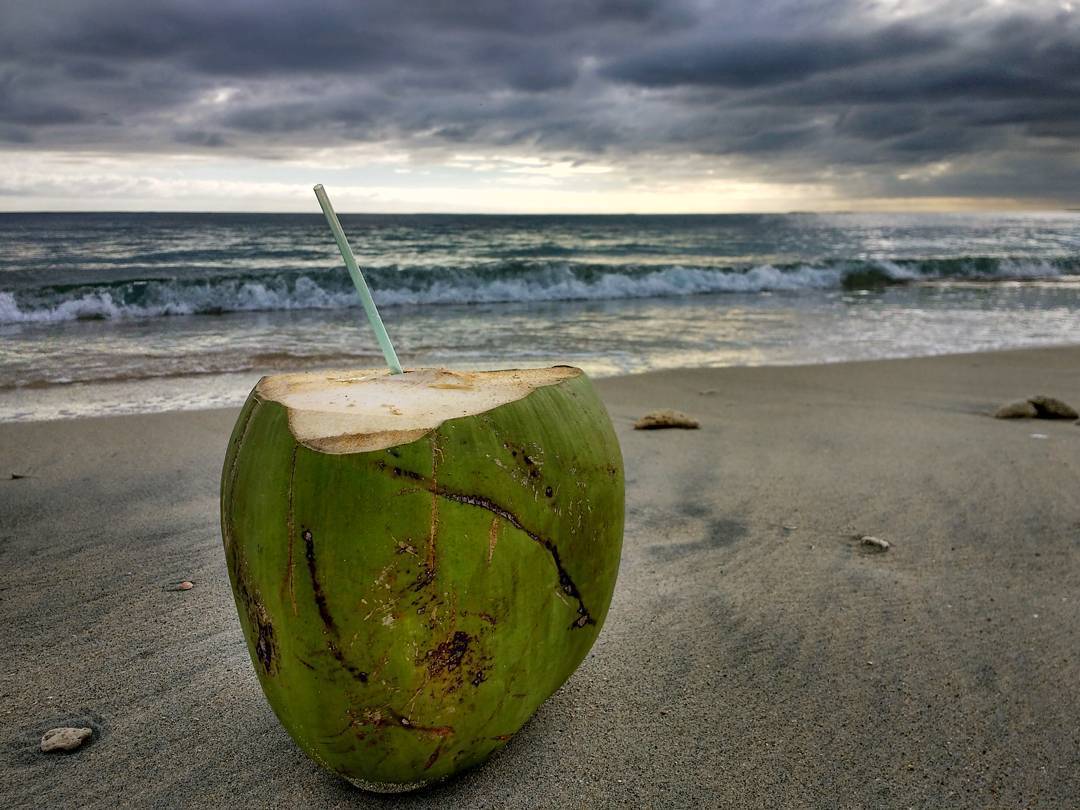
Photo: Andrea Cacciatori
I am far from innocent. There have been many times during my travels where I let myself and the situation get out of hand. It’s easy to do! With all the booze in Cuba, it doesn’t take much before you do something that you will later regret.
Travel Insurance for Cuba
Traveling without insurance would be risky so do consider getting good backpacker insurance sorted before you head off on an adventure.
ALWAYS sort out your backpacker insurance before your trip. There’s plenty to choose from in that department, but a good place to start is Safety Wing.
They offer month-to-month payments, no lock-in contracts, and require absolutely no itineraries: that’s the exact kind of insurance long-term travellers and digital nomads need.
SafetyWing is cheap, easy, and admin-free: just sign up lickety-split so you can get back to it!
Click the button below to learn more about SafetyWing’s setup or read our insider review for the full tasty scoop.
How to Get Into Cuba
The main international airport for Cuba is the José Martí International Airport in Havana.
Surprisingly though, there are 10 international airport in Cuba! That said, flying into Havana will be the cheapest option. If you are arriving to Cuba from Mexico, you can find budget flights under $100 one-way through Interjet Airlines.
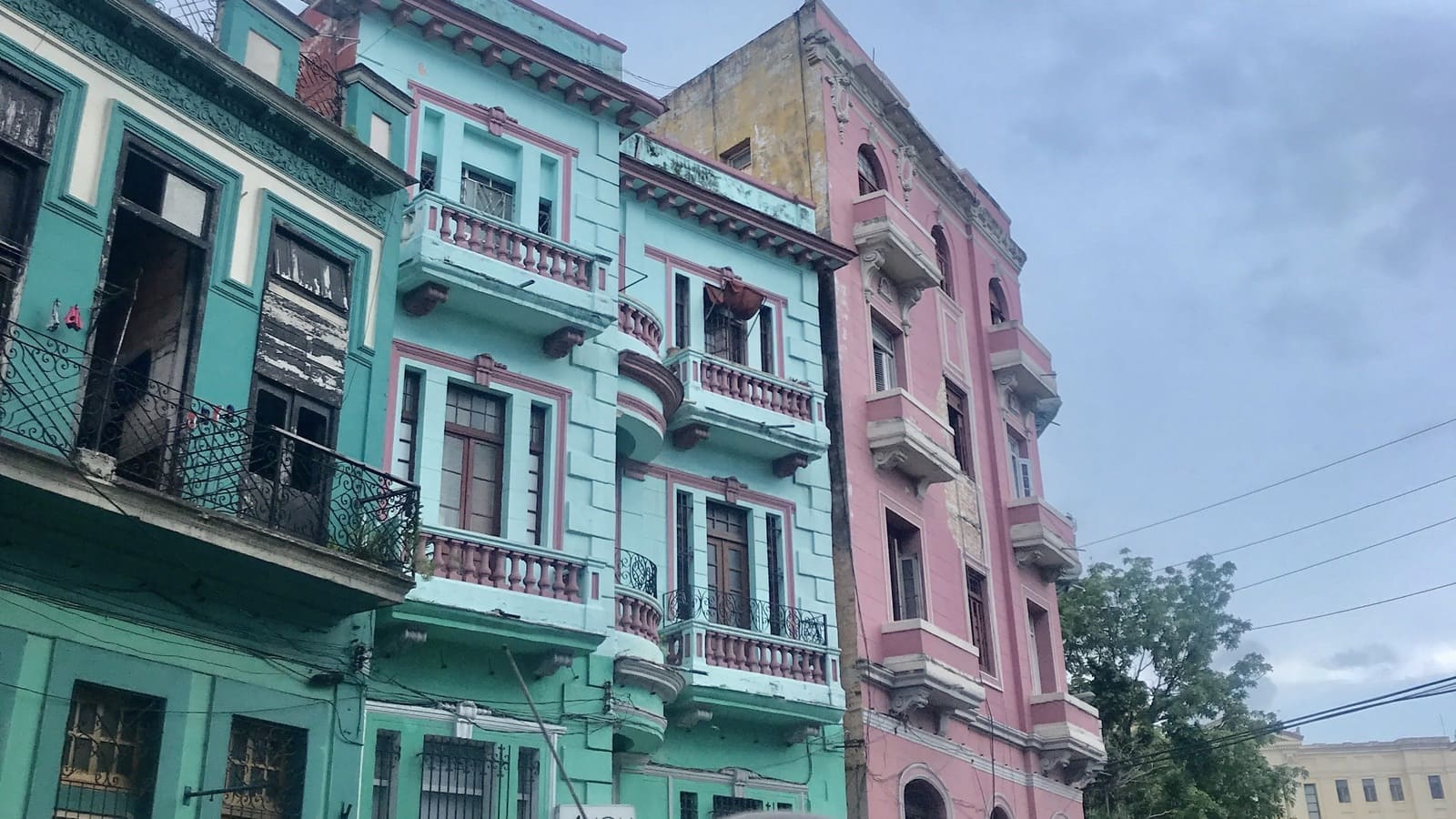
Photo: @taya.travels
Entry Requirements for Cuba
Ah the Cuban tourist visa…
Don’t worry, these days getting a tourist visa is pretty straight forward – yes, even for Americans. All travelers to Cuba must possess a valid passport, a return ticket, travel insurance policy with medical coverage, and a visa or tourist visa. They might ask you to present all or none of these things when you go through customs in Havana. Print all the documents needed just in case.
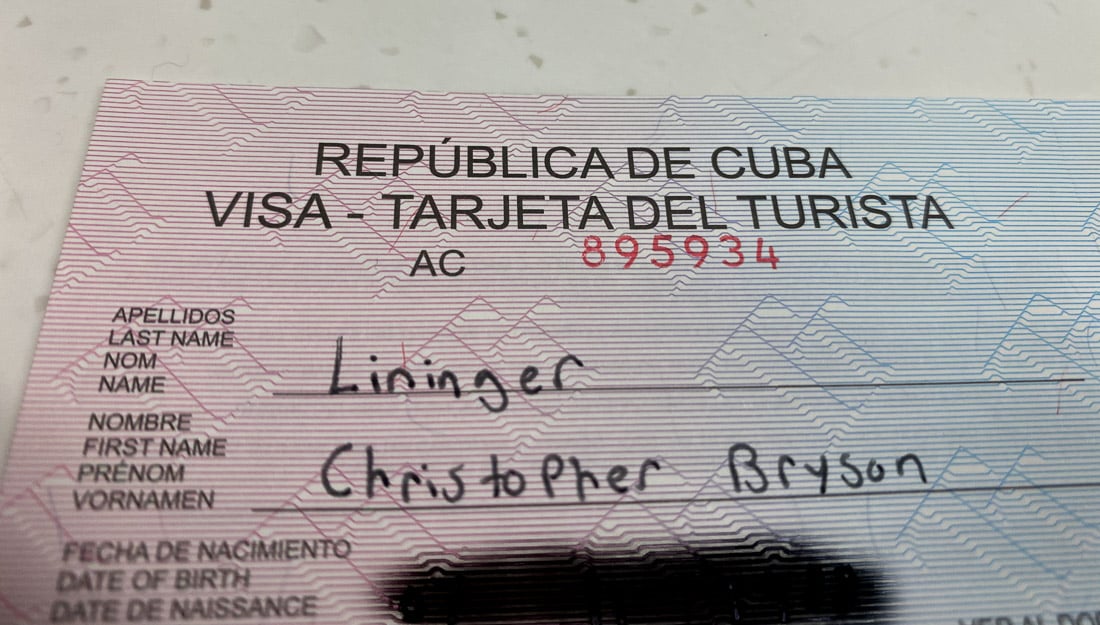
Photo: Chris Lininger
When you buy your flight to Cuba you may receive a 30-day tourist card along with your ticket and often travel insurance too as was the case when I booked with Jet Blue. Most airlines sell/give the tourist card to you at the airport.
In any case, the price for the tourist card can range from $20-$100 depending on your nationality and the airline company. As far as I know, there is not a streamlined rate for tourist cards.
I paid $50 at the Jet Blue counter in JFK airport in New York. I literally just walked up to the counter and got it sorted in 5 minutes. I think you do not need to go with any sort of visa service for this.
Once in Cuba, you’ll need to present your tourist card at customs. If, for some reason, you didn’t get the tourist card in advance, you can purchase one in the airport in Havana upon arrival. Whatever you do, don’t lose your tourist card!
Also, once you are inside the country you can extend your 30-day visa/tourist card for another 30 days (90 days for Canadians!).
Cuba Tourist Visas for Americans
For American backpackers traveling to Cuba, things are not as easy as they are for Europeans or other nationalities.
Now is the time I get to thoroughly confuse you, but I’ll do my best to make things clear! But let me get this out of the way first: AMERICANS CAN 100% travel to Cuba as tourists, even if you don’t get to say that is the reason specifically.
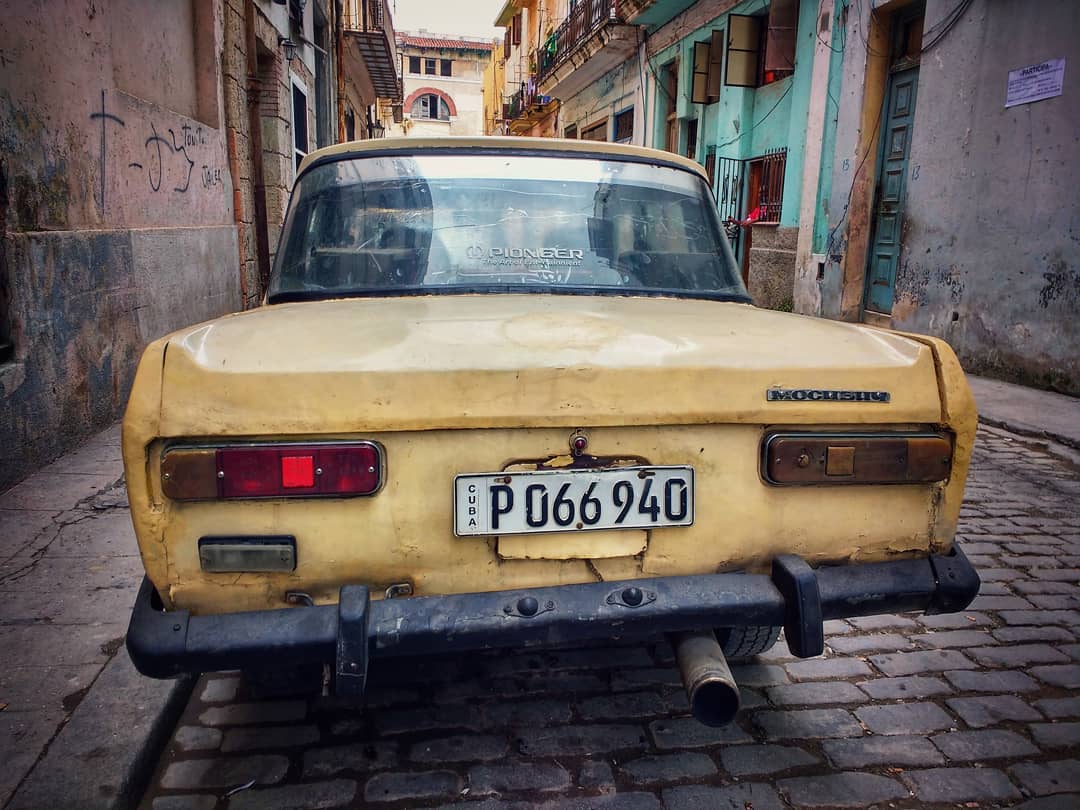
Photo: Andrea Cacciatori
America and Cuba have not had diplomatic relations essentially since the time Fidel Castro seized power in 1959. In March 2016, President Obama announced the beginning of a process of normalizing relations between Cuba and the United States. Since then, Trump has done his best to fuck up the US-Cuba relations progress Obama opened up just like he is doing with every other aspect of the county.
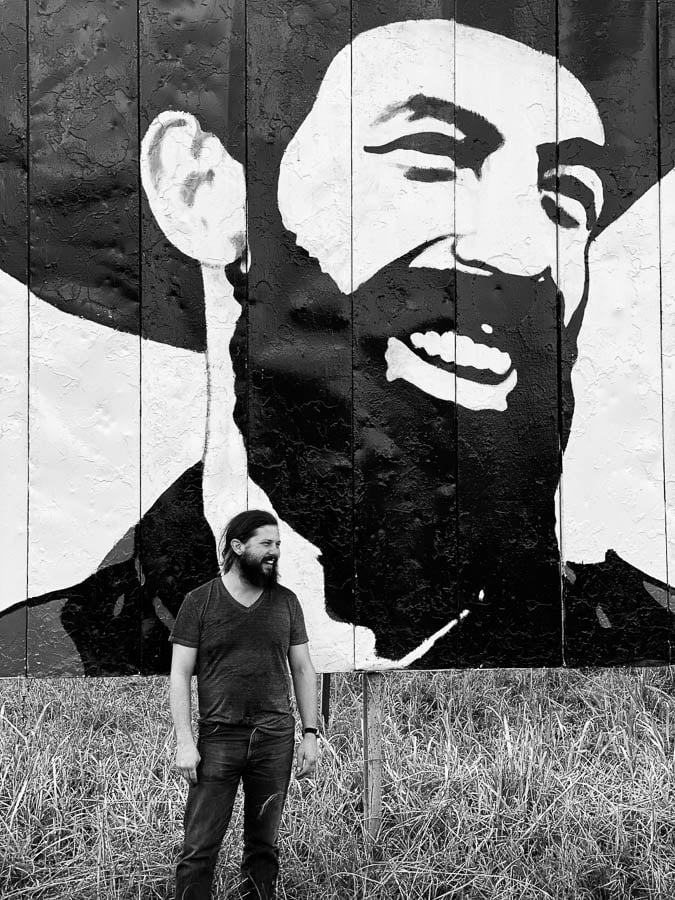
Photo: Chris Lininger
So… what does all of this mean for American backpackers?
This is the official word from the US Department of State: “Tourist travel to Cuba remains prohibited. You must obtain a license from the Department of Treasury or your travel must fall into one of 12 categories of authorized travel.”
Authorized Travel Categories For Americans
The 12 categories of authorized travel to Cuba are: family visits; official business of the U.S. government, foreign governments, and certain intergovernmental organizations; journalistic activity; professional research and professional meetings; educational activities; religious activities; public performances, clinics, workshops, athletic and other competitions, and exhibitions, and best of all, the very vague “support for the Cuban people”.
My friends and I (all Americans) came into Cuba on the “Support for the Cuban people” declaration and I suggest you do the same.
Many backpackers just say they are Catholics going to Cuba to visit its impressive churches and cathedrals and get a tourist visa based on religious grounds, with little to no proof required (praise the lord).
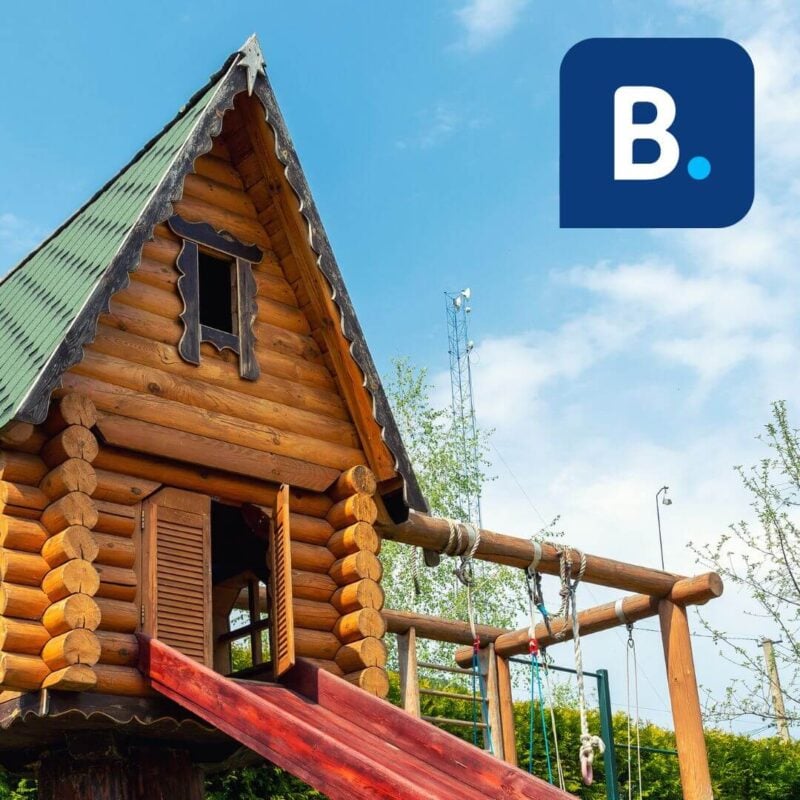
Get 15% OFF when you book through our link — and support the site you love so dearly 😉
Booking.com is quickly becoming our go-to for accommodation. From cheap hostels to stylish homestays and nice hotels, they’ve got it all!
View on Booking.comHow to Get Around in Cuba
The three main transportation options in Cuba are bus, taxi/private car, and renting a car. You can opt to take internal flights within Cuba but these are very expensive as I mentioned before.
When it comes to taxis it is all about the negotiation process. Taxi drivers will ALWAYS charge you more than a Cuban person. Note: taxi companies do not allow Cubans and foreigners to ride in the same taxi, so you can’t opt to share a taxi (unless maybe you speak perfect Spanish and/or look Latino).
When it comes to long-distance transport by private car, aka a taxi – I was truly shocked at how expensive it was. We were sometimes quoted as much as $500 for 5 people for a 4-5 hour car journey.
In general, transportation options in Cuba are very slow and very limited – so there were times on my trip where we had no choice but to take a taxi up to 4 hours away. If we did not do it that way, we were looking at losing potentially days of time from our trip working around bus schedules.
Viazul bus is the top bus company in Cuba for backpackers. Their prices are not super cheap but they make up for that by having very comfortable buses. The distances in Cuba can be huge, especially if you are traversing the entire island. Sometimes the prices of the bus and the taxi are the same (or less0, so if you have time to check both and compare, there might be an opportunity to save some money.
Renting a car or a motor bike will certainly give you the freedom to roam and go where you want. Each car rental company has different rules regarding how far you can travel in your rental car. Car rentals can also be expensive so shop around to find the best deal. We recommend purchasing the rental insurance with RentalCover.com to cover your vehicle against any common damages such as tires, windscreens, theft, and more at a fraction of the price you would pay at the rental desk.
The other main option is the train. Cuban trains are generally in poor condition, never run on time, and make for a pretty rude journey no matter how far you are going. That is what we heard. I actually did not take the train once while I was in Cuba fyi.
The way nicer (and way more expensive) overnight Tren Francés can get you from Havana to Santiago de Cuba quicker than any other public transport.
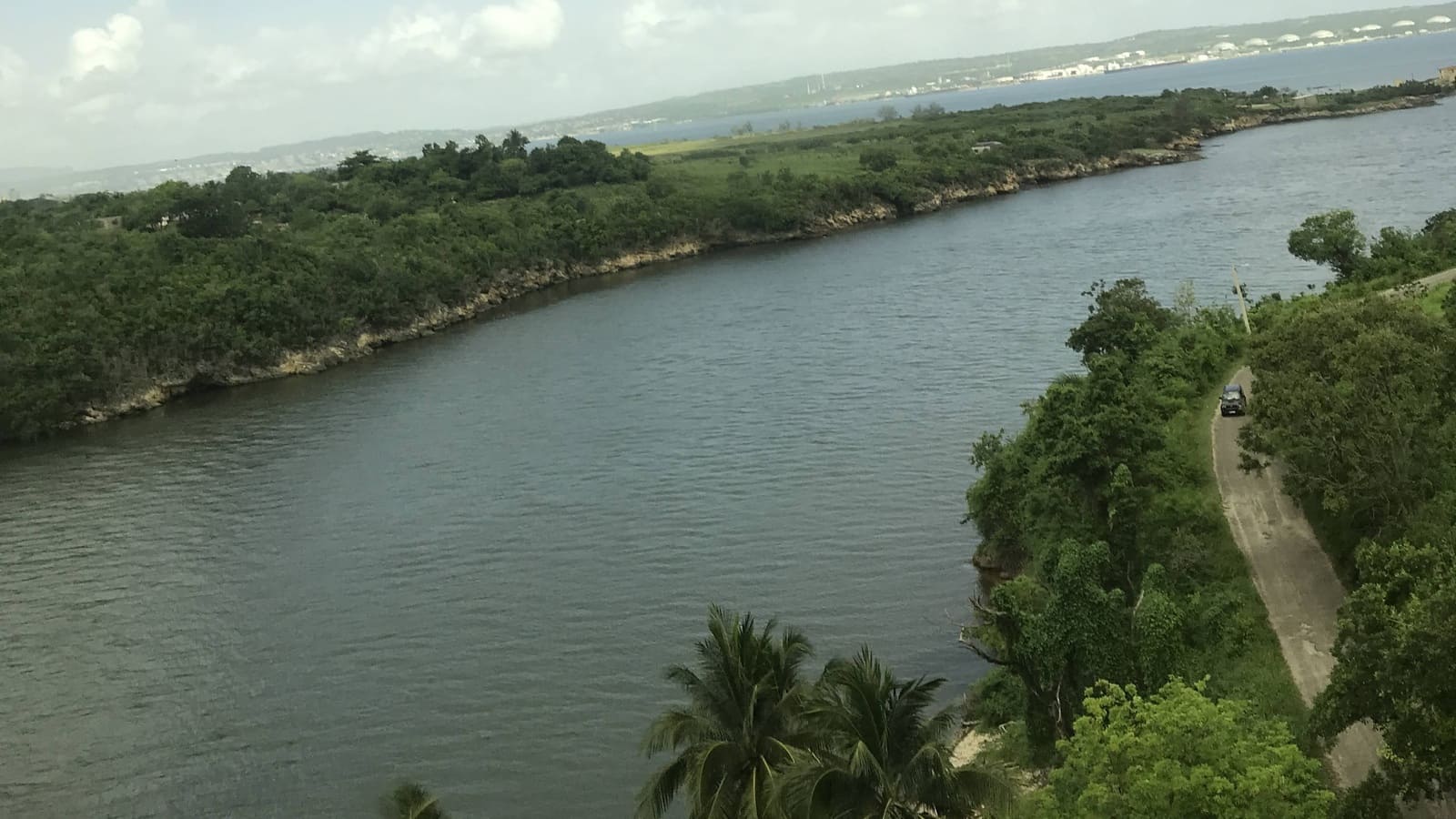
Photo: @taya.travels
Onward Travel from Cuba
Since Cuba is an island, you will certainly be flying out when the time comes to wrap up your backpacking trip.
There are cheap daily flights running between Havana and Cancun, Mexico if your journey is taking you to Mexico and beyond Central America.
For flights to the US, the cheapest option will probably be to fly into Miami and catch another flight from there. I recommend checking out Skyscanner for the best prices on cheap flights from Cuba.
For most countries, Cuba included, solo travel is the name of the game. That said, if you are short on time, energy, or just want to be part of an awesome group of travelers you can opt to join an organized tour. Joining a tour is a great way to see a majority of the country quickly and without the effort that goes into planning a backpacking trip. However—not all tour operators are created equal—that is for sure.
Hitchhiking in Cuba
There are conflicting opinions regarding hitchhiking in Cuba. On one hand it may be illegal for Cubans to have foreigners in their cars without the proper bullshit paper work.
Other folks have told me that by law, drivers are required to pick up hitchhikers! Polar opposite information, I know, but I have not come across anything from the Cuban government specifically speaking to this.
I have also heard that in Cuba, picking up hitchhikers is mandatory by government vehicles, if passenger space is available. Hitchhiking is encouraged, as there are few cars in some areas, and designated hitchhiking spots are used. Waiting riders are picked up on a first come first go basis.
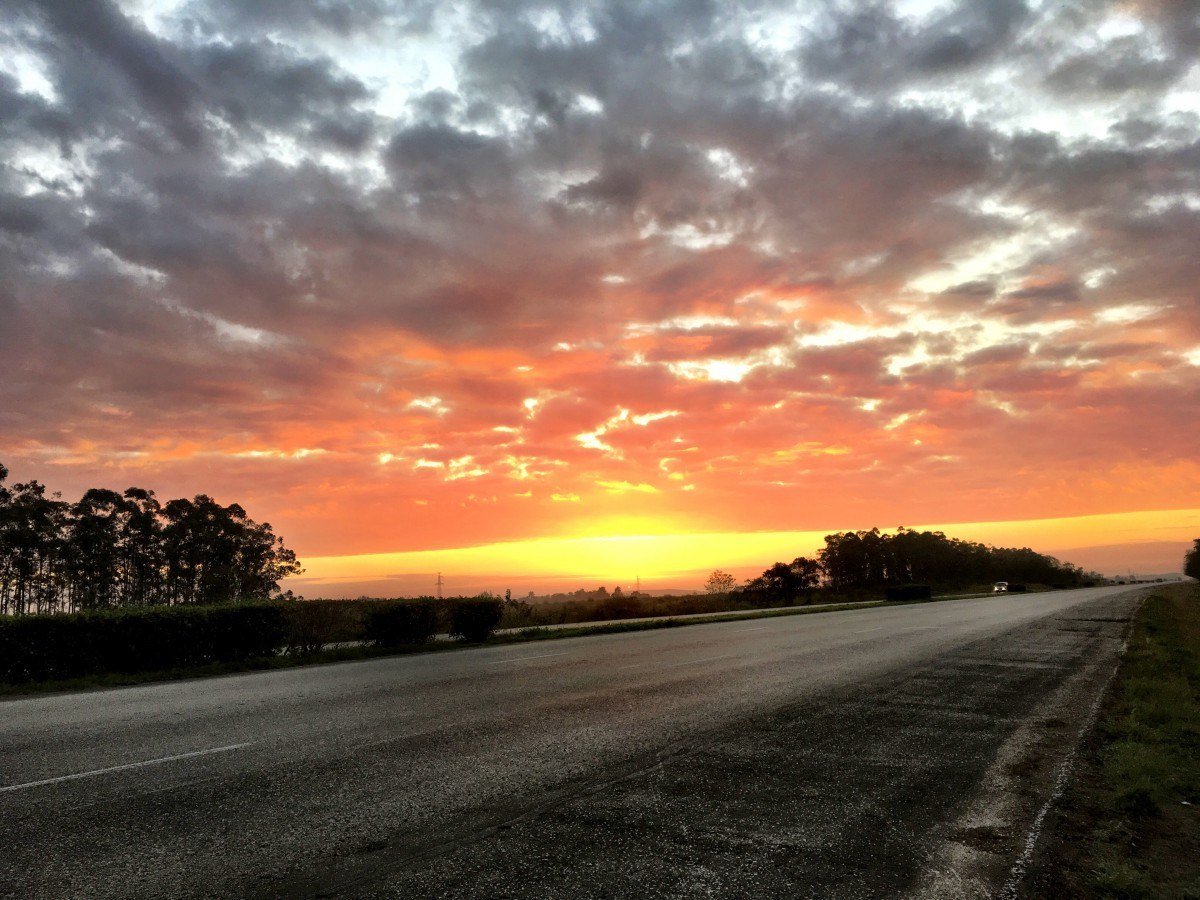
In any case, you should not find it too difficult to hitch a ride in the rural areas of Cuba (and there are many of them).
For the record, I have not personally hitchhiked in Cuba, otherwise I might have a more informed opinion on all of this.
My advice for hitchhiking whilst backpacking Cuba: go for it!
Working in Cuba
There are many ideal Central American bases that are enticing for Digital Nomads…and speaking from experience – Cuba is not one of them.
Out of all the countries I have traveled to, the internet situation in Cuba is so out-dated, expensive, and slow that working online from Cuba in any sort of real capacity really is not possible.
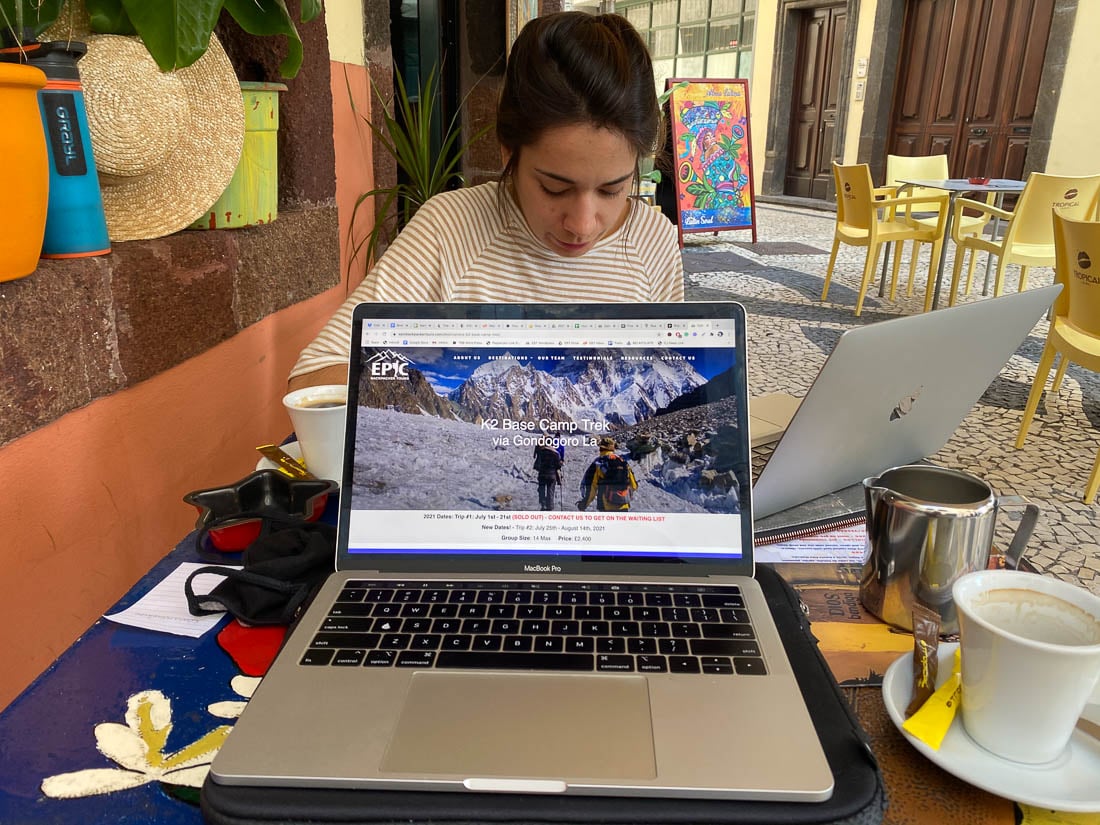
Photo: Chris Lininger
Also because of the nationalized nature of the communist system – it is not easy, nor financially viable for foreigners to try to work for Cuban businesses. Maybe this will change down the line, but for now, it is possible to check your email in Cuba, but beyond that consistent, accessible, fast internet does not exist.

A new country, a new contract, a new piece of plastic – booooring. Instead, buy an eSIM!
Jetpac eSIMs work just like an app: you download it, pick your plan, and BOOM! You’re connected the minute you land. It’s that easy.
Read about how e-Sims work or click below to see one of the top eSIM providers on the market and ditch the plastic.
Grab an eSIM!What to Know About WIFI/Internet in Cuba:
Getting wifi access requires a bit of effort. You need to buy “wifi cards” – they cost $1/hour. There are special government shops that sell them, but the lines are often insane. I recommend going to any big hotel – like the Hotel Inglaterra in Havana for example – and buying as many as they will sell you (10-20).
You then need to find places with a wifi hotspot, like big hotels, public parks, and sometimes even cafes. You have to then individually input the card numbers every time you connect. Not the most efficient system in the world.
Volunteer in Cuba
Volunteering abroad is an amazing way to experience a culture whilst helping your host community. There are plenty of different volunteer projects in Cuba including teaching, construction, agriculture and pretty much anything.
High levels of poverty throughout Cuba mean there are plenty of opportunities for backpackers to offer up some time and skills. The country is in constant need of medical volunteers, English teachers, and help with conservation projects. It’s also possible to find opportunities in social work and construction. Most travelers can volunteer in Cuba on the regular tourist card for up to 6 months.
Our go-to platform for finding volunteering gigs is Worldpackers who connect travellers with host projects. Have a look at the Worldpackers site and see if they have any exciting opportunities in Cuba before signing up.
Alternatively, Workaway is another excellent common platform used by travellers searching for volunteering opportunities. You can read our review of Workaway for more info on using this terrific platform.
Volunteer programs run through reputable work exchange programs like Worldpackers and platforms like Workaway are usually very well-managed and reputable. However, whenever you are volunteering do stay vigilant, especially when working with animals or children.
Food in Cuba
Onto one of my favorite subjects! There are plenty of tasty Cuban dishes to try in Cuba. The various origins that make up the Cuban population greatly add to the diversity of flavors found in their cuisine. Let’s take a look at some of my favorite Cuban dishes to try…
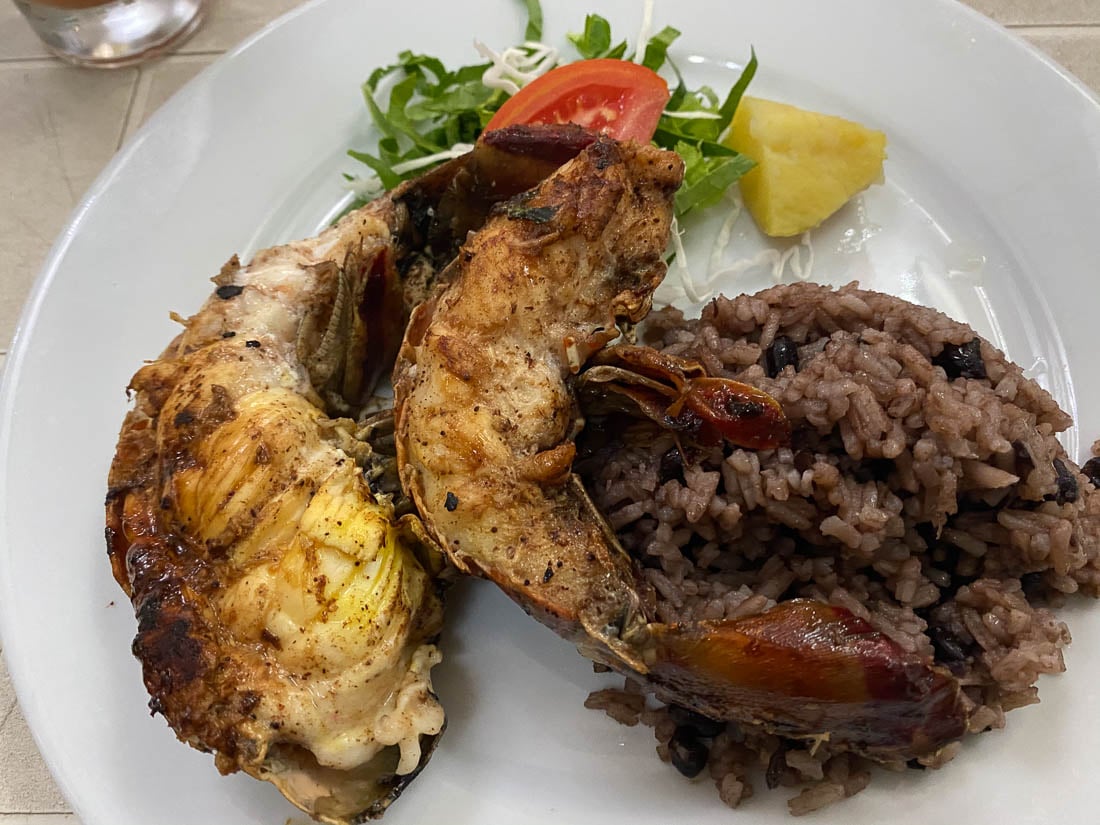
Photo: Chris Lininger
Tamales: Similar to the Mexican tamales. In Cuba, however, the meat is actually mixed with the dough and not used as a filling.
Pulled Pork: A classic, tasty, and often cheap street food.
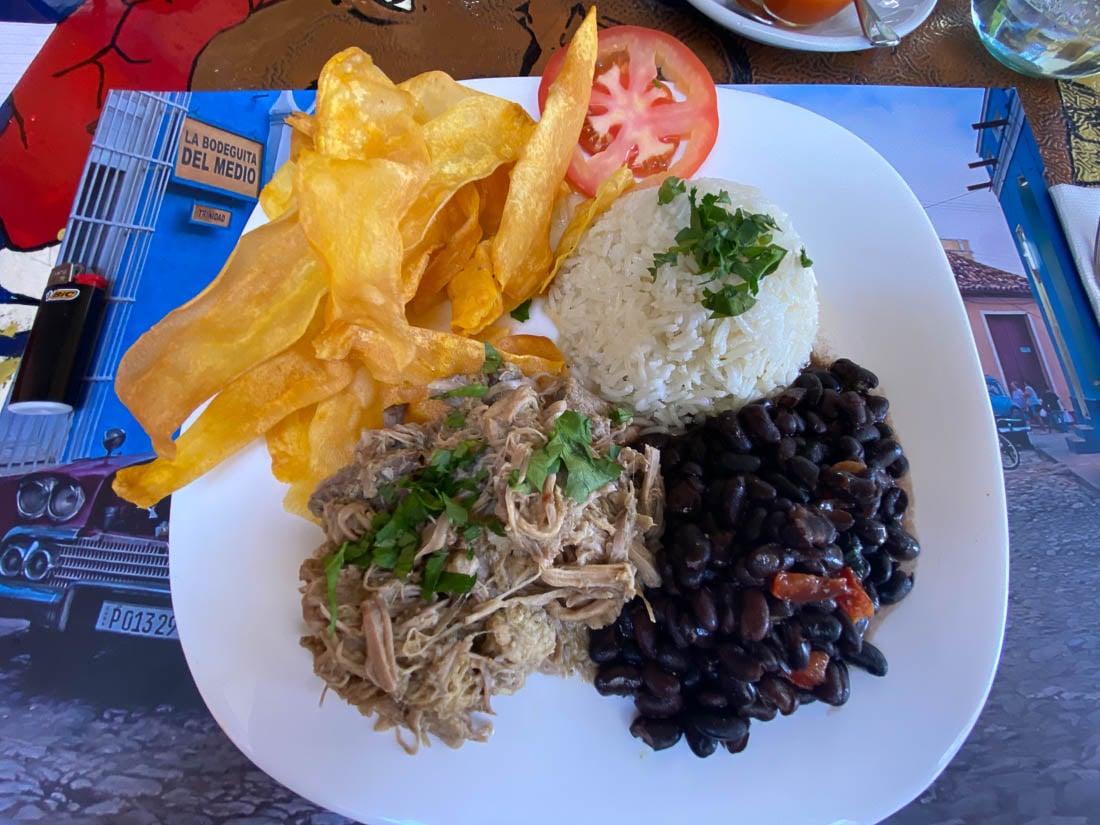
Photo: Chris Lininger
Medianoche: The classic, late night (or literally “midnight”) sandwich found all over Cuban cities. In the States, you will find versions of the sandwich simply called a “Cuban” or “Cubano.” Ham, pulled pork, cheese, and pickles galore.
Pernil Relleno de Moros y Cristianos: This Cuban dish is made more interesting as it is filled with another Cuban dish! A pork shoulder is marinated in orange juice, garlic, oregano and pepper and then filled with rice and beans and cooked in the oven.
Ropa Vieja: The national dish of Cuba. A tasty blend of slow cooked tender beef, beans, tomatoes, and spices.
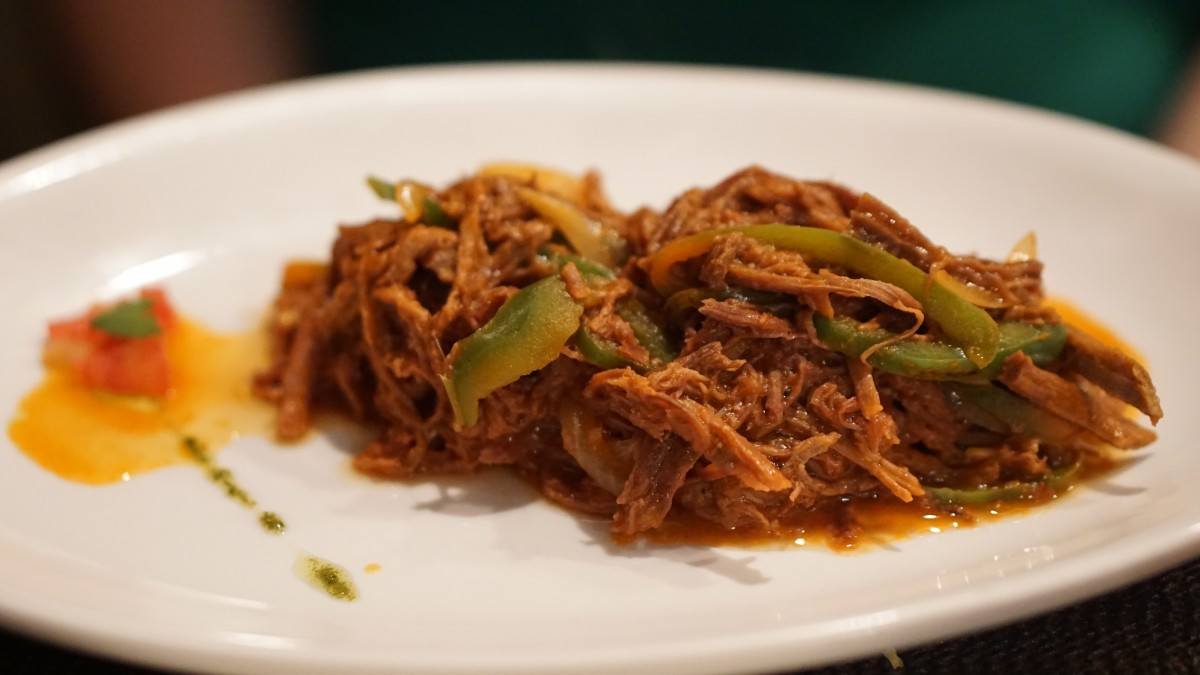
Ajiaco: This stew contains a little bit of everything: potatoes, pumpkin, malanga (a vegetable similar to topinambur), plantain, corn, meat, tomato paste, spices, beers, lemon juice and pretty much any other ingredient available.
Cuban Culture
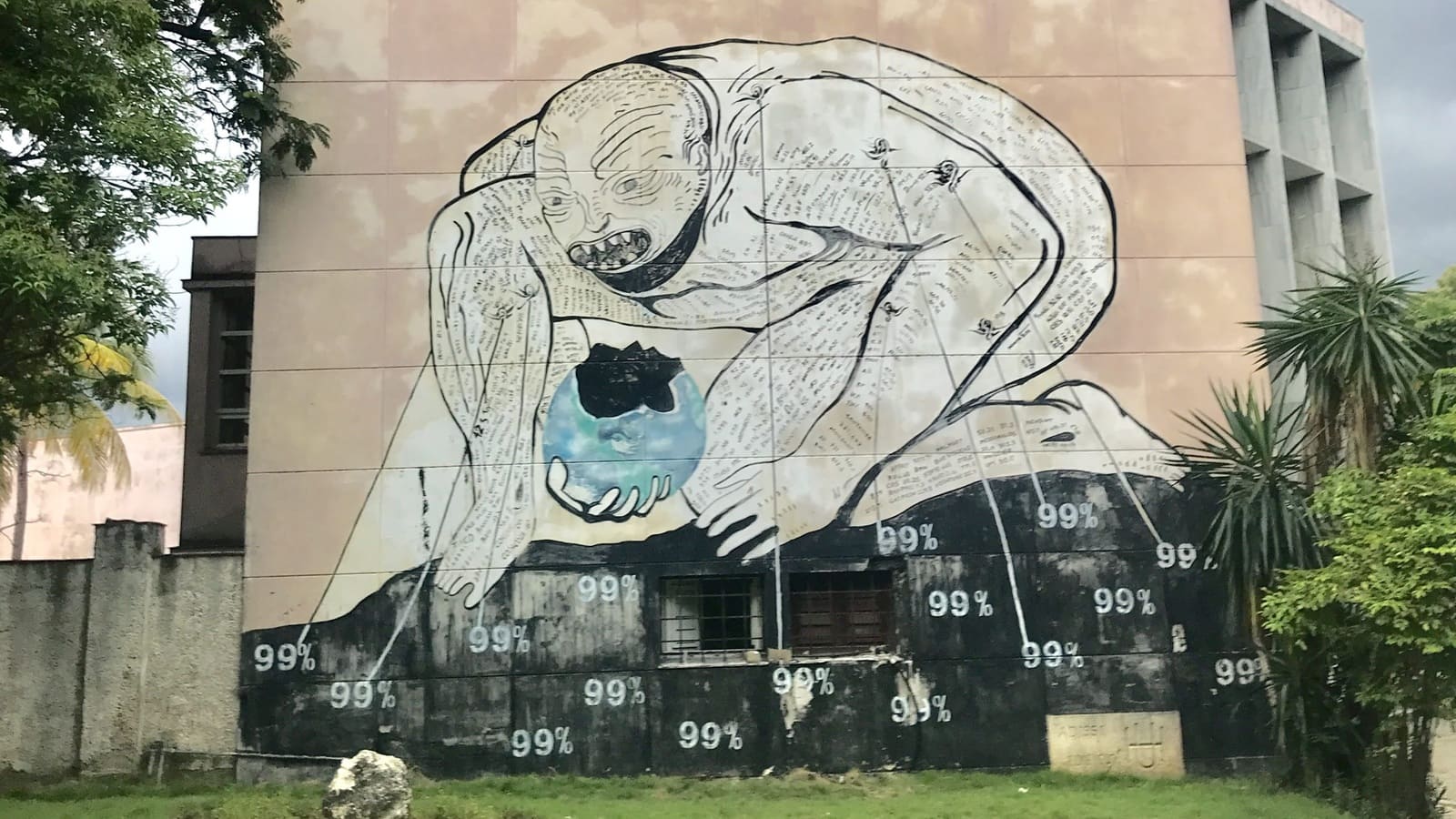
Photo: @taya.travels
Cuba’s population is an obvious reflection of its complex history. Cuba is a multi-ethnic nation, home to people of different backgrounds. As a result, some Cubans do not treat their nationality as a citizenship with various ethnicities and national origins comprising the “Cuban people.” The majority of Cubans descend from Spaniards, or so they claim.
There is a West African cultural component (West Africans were brought to Cuba to work on plantations as slaves) which has been somewhat influential, with many Afro-Cubans also being of Jamaican or other Afro-Caribbean origin.
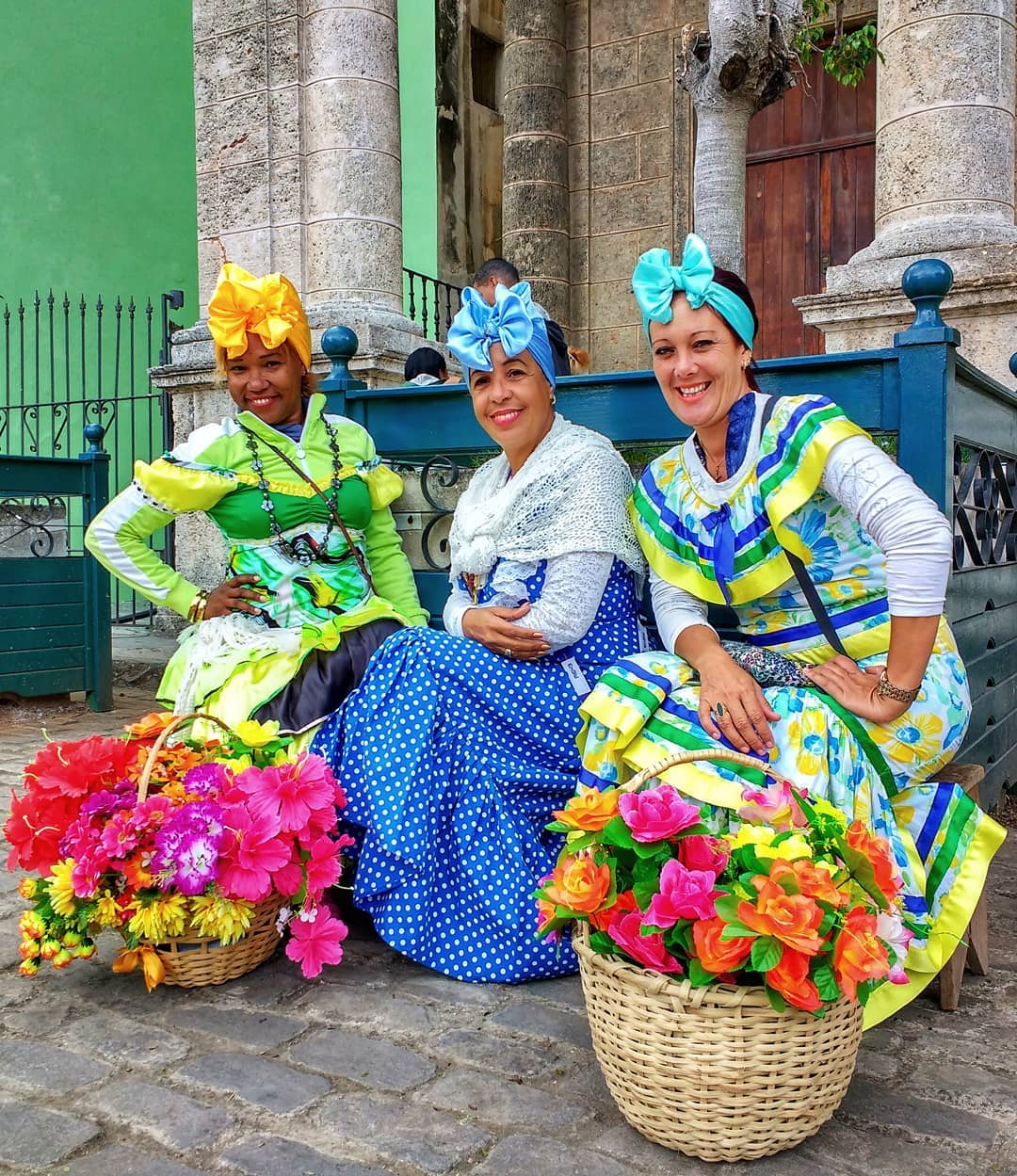
Photo: Andrea Cacciatori
After years of being closed off from the world under a rather harsh dictator, I believe Cubans are genuinely happy to have more travelers visit their island paradise. If you can speak some Spanish, many are keen to open up for a good conversation.
Certainly, Cubans are very hospitable and welcoming people. Don’t be surprised if you make some new friends!
Cuba Travel Phrases
Learning a bit of Spanish is a great way to get the most out of your trip. When I became fluent in Spanish, it really changed the way I was able to travel in Cuba and beyond. It is such a useful language to know! You can speak it in over 20 countries!
Here are a few helpful/basic Cuba travel phrases with English translations for your backpacking Cuba adventure:
Hello – Hola
How are you? – Como estas?
Good Morning – Buenos dias
I don’t understand – No entiendo
How much? – Cuánto cuesta?
Stop here – Te detienes aquí
Where is the toilet? – Donde esta el baño?
What is this? – Que es esto?
No plastic bag – Sin bolsa de plastico
No straw please – No paja por favor
No plastic cutlery please – No hay cubiertos de plástico por favor
Sorry – Lo siento
Help! – Ayudame!
Cheers! – Salud!
Dick head! – Cabron!
Dating in Cuba
Dating and sex in Cuba are just as complicated as every other unique-to-Cuba aspect. At the same time, casual encounters/one-night stands between locals and tourists – especially local men with foreign women – are quite common and if that is something you are interested in pursuing, you just need to be safe/smart about it.
One should consider that prostitution in Cuba for both men and women is very wide-spread…some would say rampant. Because of this, it is hard to know when someone is actually interested in a romantic relationship with you vs trying to seduce you into paying them for sex – this is very true for young foreign men (yeah mate, she might actually be that into you).
Basically, if you have any hope of having a relationship with a Cuban beyond “hola” you’ll need to be in a situation where they feel comfortable to talk to you, which might be inside of a music club, bar, or on some section of beach.
Cuba almost feels like a country under some kind of strange conservative Sharia law… except when you go out and see what the people are wearing it actually has nothing to do with conservative law. On the law books, Cuba actively enforces tourist-Cuban segregation. Which feels equally bizarre. That said, I had plenty of experiences hanging out with local Cubans and the police did not bother us. In Havana, inter-nationality mingling is commonplace.
Good luck to you if you try to crack the Cuban dating code.
Books to Read About Cuba
There are so many fantastic books about Cuba that it’s hard to pick just a few! Here are some of my favorite books set in Cuba:
- The Old Man and the Sea — The Old Man and the Sea is one of Hemingway’s most enduring works. Told in a language of great simplicity and power, it is the story of an old Cuban fisherman, down on his luck, and his supreme ordeal — a relentless, agonizing battle with a giant marlin far out in the Gulf Stream.
- Our Man in Havana — First published in 1959 against the backdrop of the Cold War, “Our Man in Havana” remains one of Graham Greene’s most widely read novels. It is an espionage thriller, a penetrating character study, and a political satire of government intelligence that still resonates today.
- Explosions in a Cathedral — This swashbuckling tale set in the Caribbean during the French Revolution focuses on Victor Hugues, a historical figure who led the naval assault to take back the island of Guadeloupe from the English at the beginning of the nineteenth century.
- Guerrilla Warfare —”Guerrilla Warfare” by the revolutionary Che Guevara has become the guidebook for thousands of guerrilla fighters in various countries around the world. Very interesting even if you do not intend on fighting in a revolution. I have read it twice lol.
- Lonely Planet Cuba — It’s always handy to have a Lonely Planet in your backpack.
Brief History of Cuba
Over the course of the last 500+ years, the fate of Cuba has taken many different twists and turns.
Here is a short but important timeline to consider when trying to understand a bit of the history of Cuba:
1492 – The navigator Christopher Columbus claims Cuba for Spain.
1511 – Spanish conquest begins under the leadership of Diego de Velazquez, who establishes Baracoa and other settlements. 15 years later, the African slave trade begins.
1763 – After a year of capture by the British, Havana returned to Spain by the Treaty of Paris.
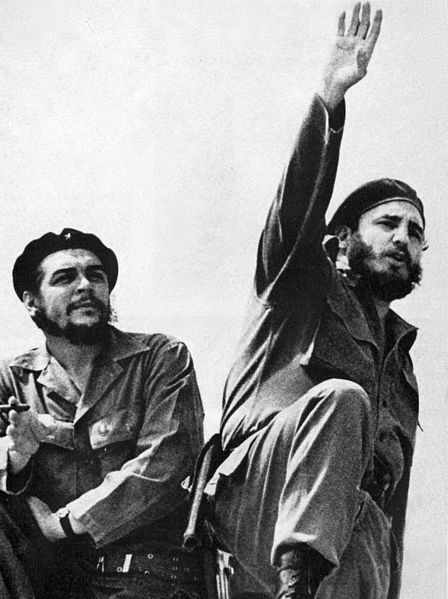
Photo: Alberto Korda (WikiCommons)
Fast forward nearly 200 years.. and plenty of really important stuff happened including the abolition of slavery (1886)… though we will focus on more recent events.
1959 – Castro leads a 9,000-strong guerrilla army into Havana, forcing Batista to flee. Castro becomes prime minister, and his brother, Raul, becomes his deputy. Che Guevara becomes third in command. A year later, all US businesses in Cuba are nationalized without compensation.
1961 – The US sponsors an abortive invasion by Cuban exiles at the Bay of Pigs; Castro proclaims Cuba a communist state and begins to ally it with the USSR.
Basically, from 1959 until the present day, Fidel Castro (until his death in 2016), and now his brother Raul in 2018 have governed Cuba under communist rule continuously. Recently, Raul Castro announced he will be stepping down as Cuba’s leader, which will mark the first time since 1959 that Cuba will exist not under a Castro individual.
Some Unique Experiences in Cuba
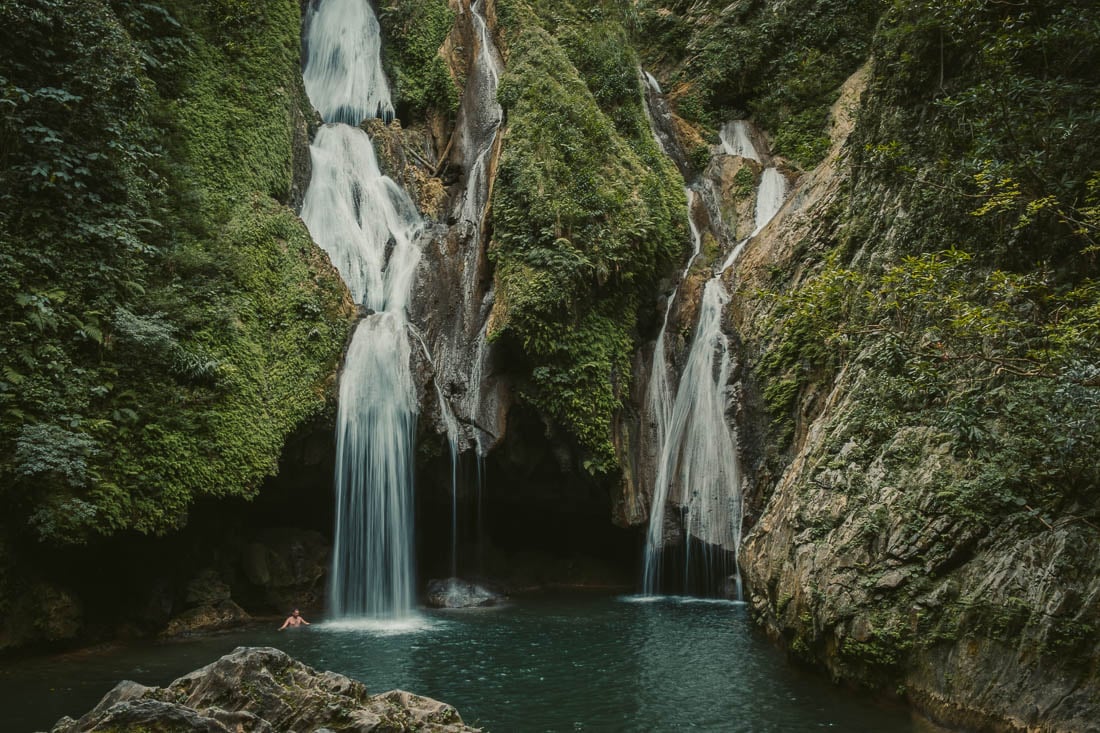
Photo: Chris Lininger
For many backpackers, coming to Cuba opens up a whole new world of exciting life experiences. Backpacking Cuba offers up the unique opportunity to dive into one of Latin America’s most interesting cultures.
Between the friendly locals, beautiful natural landscapes, nightlife, and great food, backpacking Cuba is a never ending feast of awesome experiences.
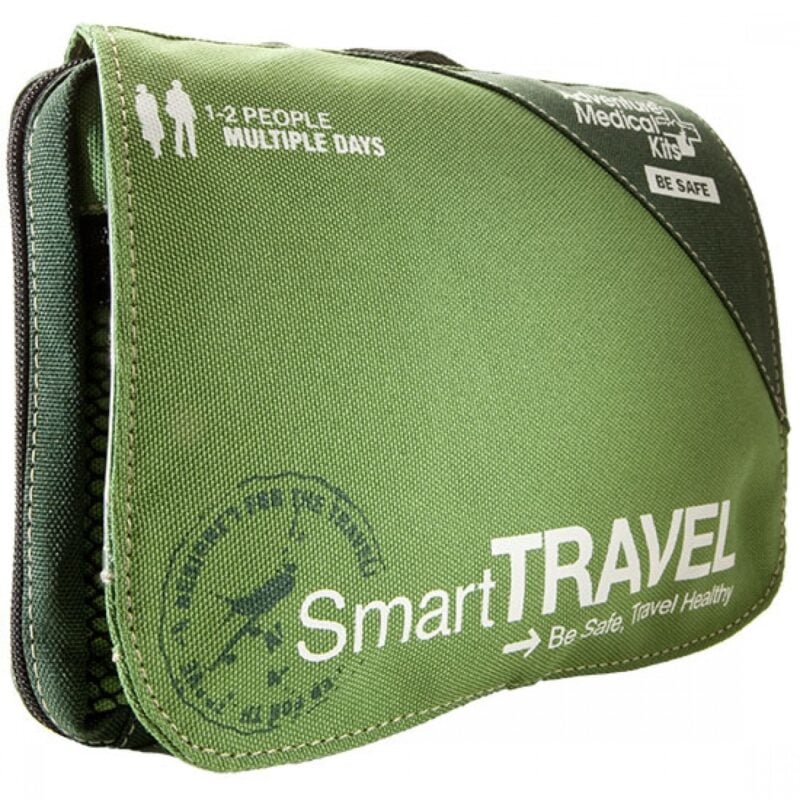
Things go wrong on the road ALL THE TIME. Be prepared for what life throws at you.
Buy an AMK Travel Medical Kit before you head out on your next adventure – don’t be daft!
Buy on REITrekking in Cuba
After years of government restriction, the wild landscapes of Cuba have opened up to trekkers for the first time. Here are the 5 best hikes in Cuba:
1. El Yunque: The approximately four-hour hike is a challenging one, especially if the trail is wet. Wildlife is abundant along the trail and the view of Baracoa and the Rio Yumuri from the top is breathtaking.
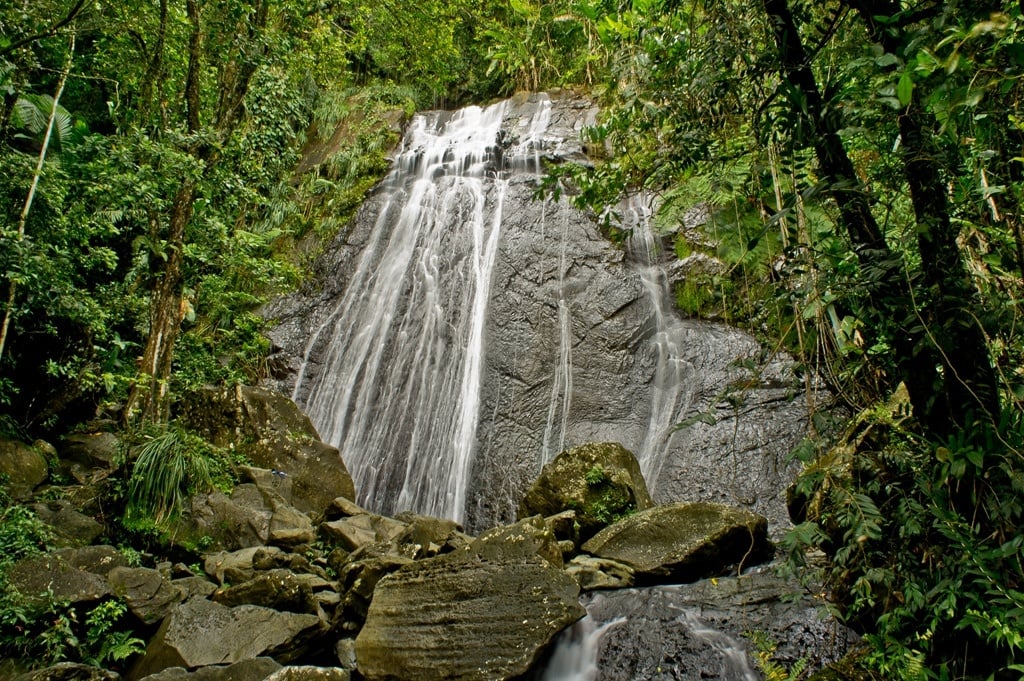
2. Vegas Grande Waterfall Hike: This was hands-down one of the best day hikes we did in Cuba. After an hour or so of hiking through jungle-forest, you reach the epic falls and turquoise pool. An excellent place to swim as well!
3. Pico Turquino: Located in the Gran Parque Nacional Sierra Maestra, this trek to the peak is a challenging two to three day adventure to the top of Cuba’s highest mountain.
4. Revolutionary Hikes: There are a number of old hiking trails formerly used by rebel soldiers during the Cuban Revolution. Their main hideout— Comandancia de la Plata located in Granma Province’s Gran Parque Nacional Sierra Maestra – was never discovered by Batista’s forces. You can now make the 4 km hike to see the site of the old camp. Pretty awesome if you like a mix of history and beautiful scenery.
5. Parque Nacional Alejandro Humboldt Hike from Moa: You can hire a guide for a short, but epic 7 km hike through one of the most biodiverse wildlife habitats in Cuba. The night hike is awesome because you can see the world’s smallest frog species (if you look closely).
Scuba Diving in Cuba
Scuba diving in Cuba can be excellent, depending on the time of year. Thanks to strict environmental protection laws and the resulting crystal clear waters, scuba diving in Cuba is world-class.
Myself and a few friends went diving off the coast of Playa Ancon. For two dives, all the gear, boat, and guide, the cost for person (who is already Open water certified) was around $60 USD. We went with Playa Ancon Dive Center (located at the end of the beach, next to the big hotel). Staff were professional and nice. They don’t have a website, so you just need to show up the day before and organize your trip with them.
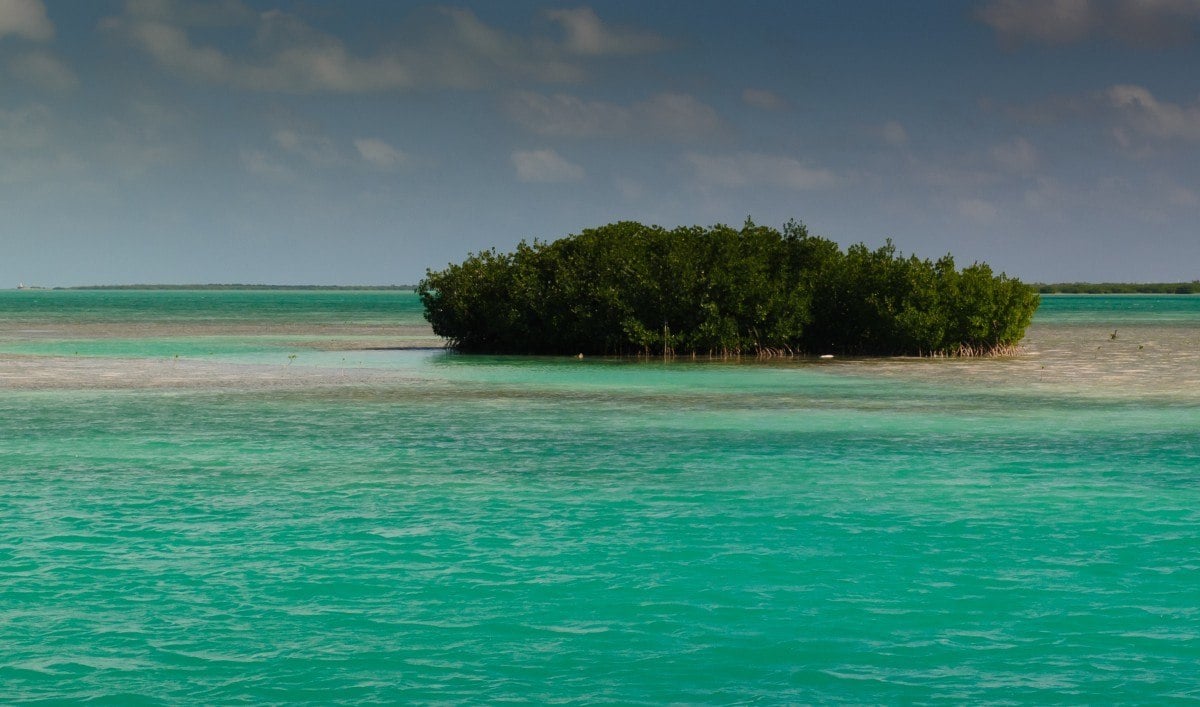
I recommend that you come to Cuba as a certified open water diver. If you are not a certified diver already, you can get your certification in Cuba, it is just more expensive than getting it in say Thailand, for example (and PADI does not operate in Cuba we found out). Here are some of the best scuba dive sites in Cuba to get you stoked on some prime Cuban diving:
- Punta Frances: Off the Isla de la Juventud.
- Around Playa Ancon (Trinidad area)
- Jardines de la Reina: South Coast.
- Cayo Largo: Another fine south coast site.
- Punta Perdiz: Right next to Cayo Largo, but located near the coast.
- Bay of Pigs: Cool shipwrecks and fish spotting around the Bay of Pigs.
- Cayo Coco: West coast, popular, though very good diving.
Cuba has done a great job protecting its coastal ecosystems. When diving in Cuba, don’t touch any of the coral or remove any shells.
Organized Tours in Cuba
G Adventures is a solid down-to-earth tour company catering to backpackers just like you, and their prices and itineraries reflect the interests of the backpacker crowd. You can score some pretty sweet deals on epic trips in Cuba for a fraction of the price of what other tour operators charge.
Check out some of their awesome itineraries for Cuba here…
Final Advice Before Visiting Cuba
You are now fully armed with the important information you need to have an awesome time backpacking Cuba.
Some advice:
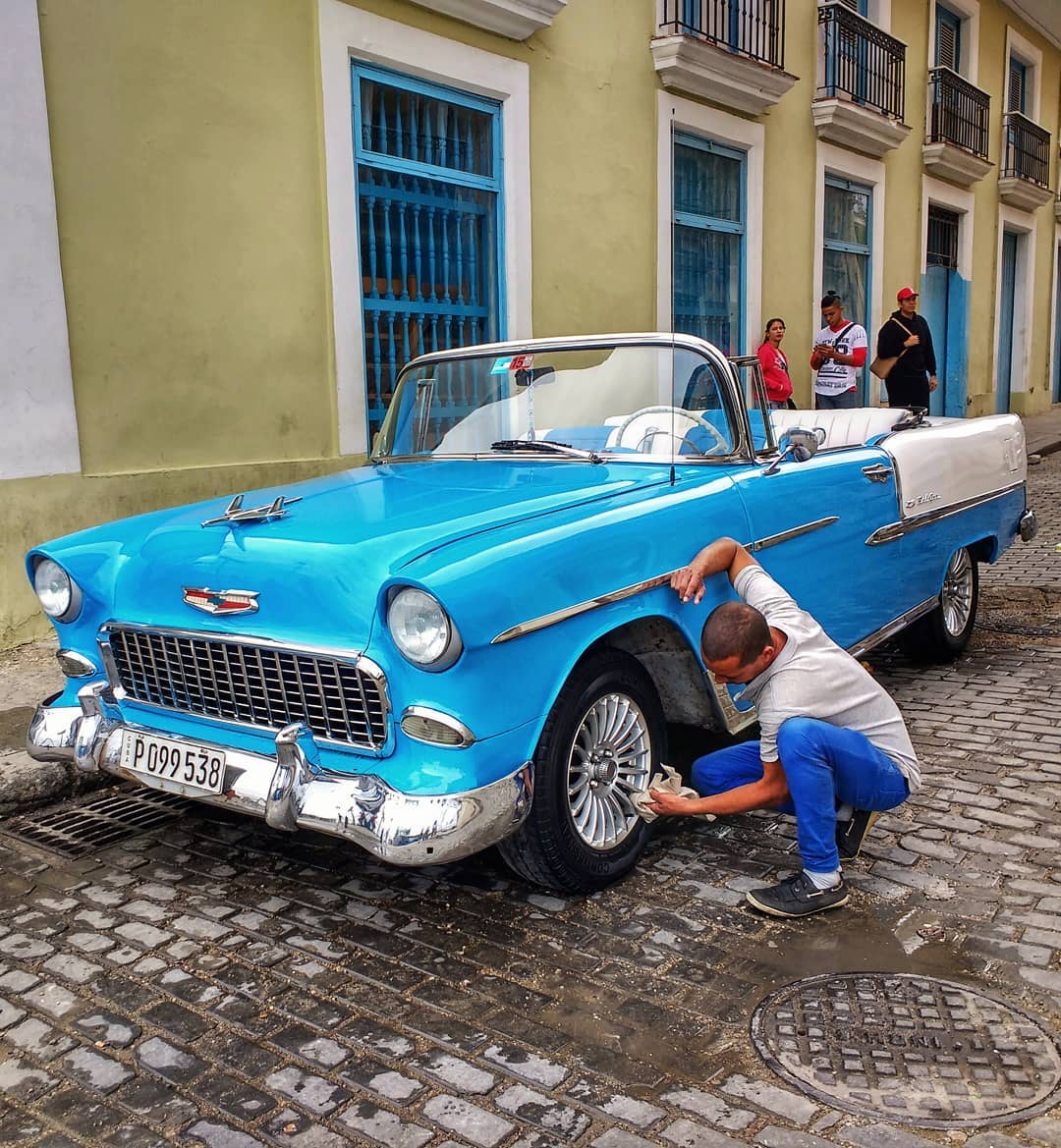
Photo: Andrea Cacciatori
Climbing on ancient fort walls, revolutionary monuments, or other historical artifacts should be avoided. Duh! Learn to appreciate the cultural treasures of Cuba and don’t be that asshole who adds to their demise.
Cuba is one of the most untouched gems in the Caribbean, and all of Latin America for that matter. I won’t tell you that you have to hurry up and get there, otherwise it will change for the worst, but, honestly, that sentiment is probably true.
Go to Cuba and have the time of your life; do the things you’ve dreamed of, but be respectful along the way. Traveling the world makes you an ambassador for your country, which is awesome.
The entire world is changing a little every day and Cuba is no different. Sure, in 20 years Cuba will no longer be a off the beaten path destination, but such is life in the 21st century.
Whenever you do indeed make it to Cuba, I hope your time there is magical and rewarding. Cuba has a lot to offer backpackers, and it is my hope that you take the time to enjoy it thoroughly.
Have a great time backpacking in this truly epic island paradise.
Adiós amigos…
*Special thanks to my good mate Andrea Cacciatori for his thoughtful contributions to this Cuba travel guide and especially his stunning photography skills! In fact, Andrea is one of the best up-and-coming travel photographers and drone operators around. You can check out more of his awesome photos/drone work on Instagram @dronextravelxearth
Buy Us a Coffee!
A couple of you lovely readers suggested we set up a tip jar for direct support as an alternative to booking through our links. So we created one!
You can now buy The Broke Backpacker a coffee. If you like and use our content to plan your trips, it’s a much appreciated way to show appreciation 🙂


